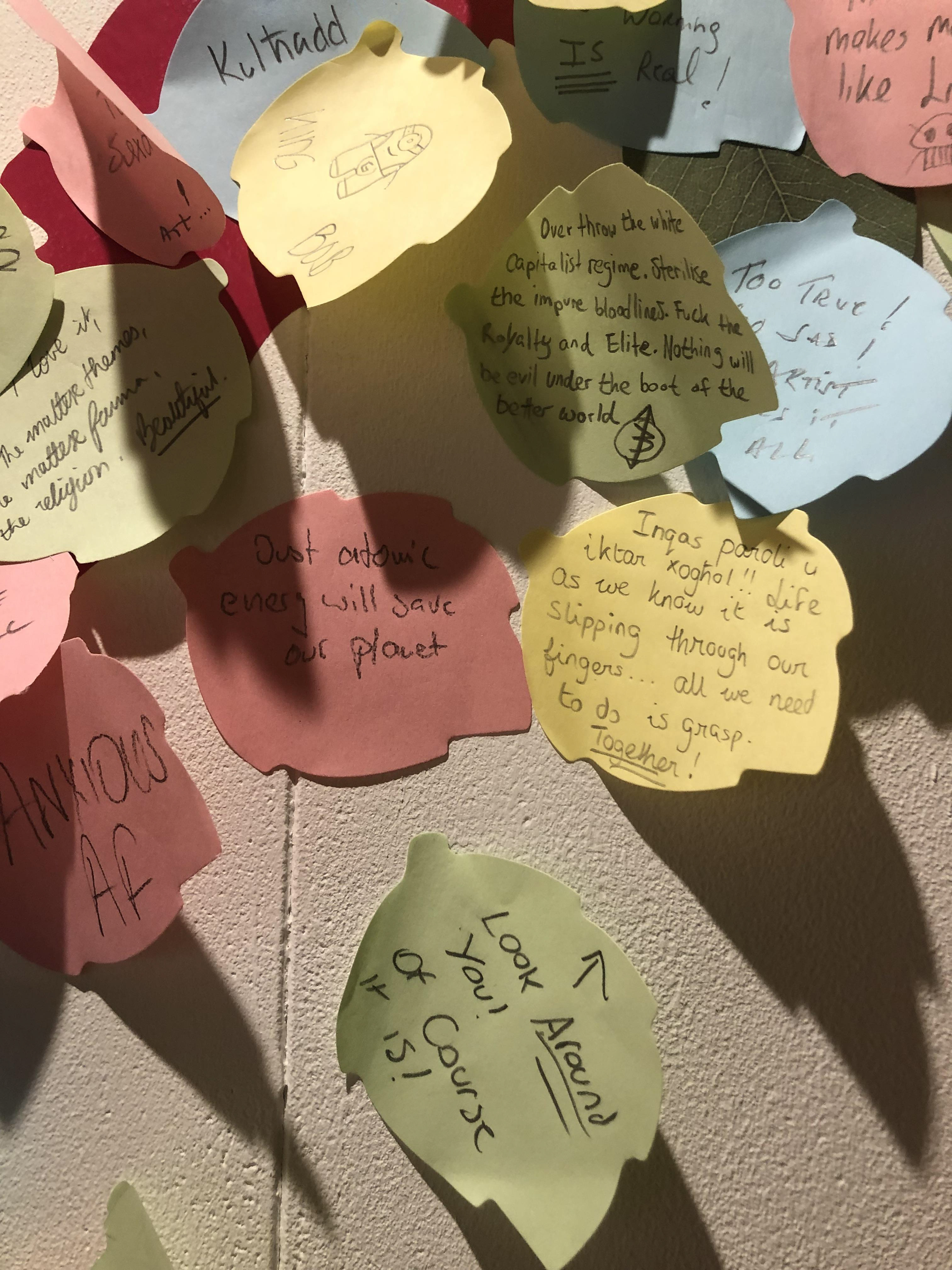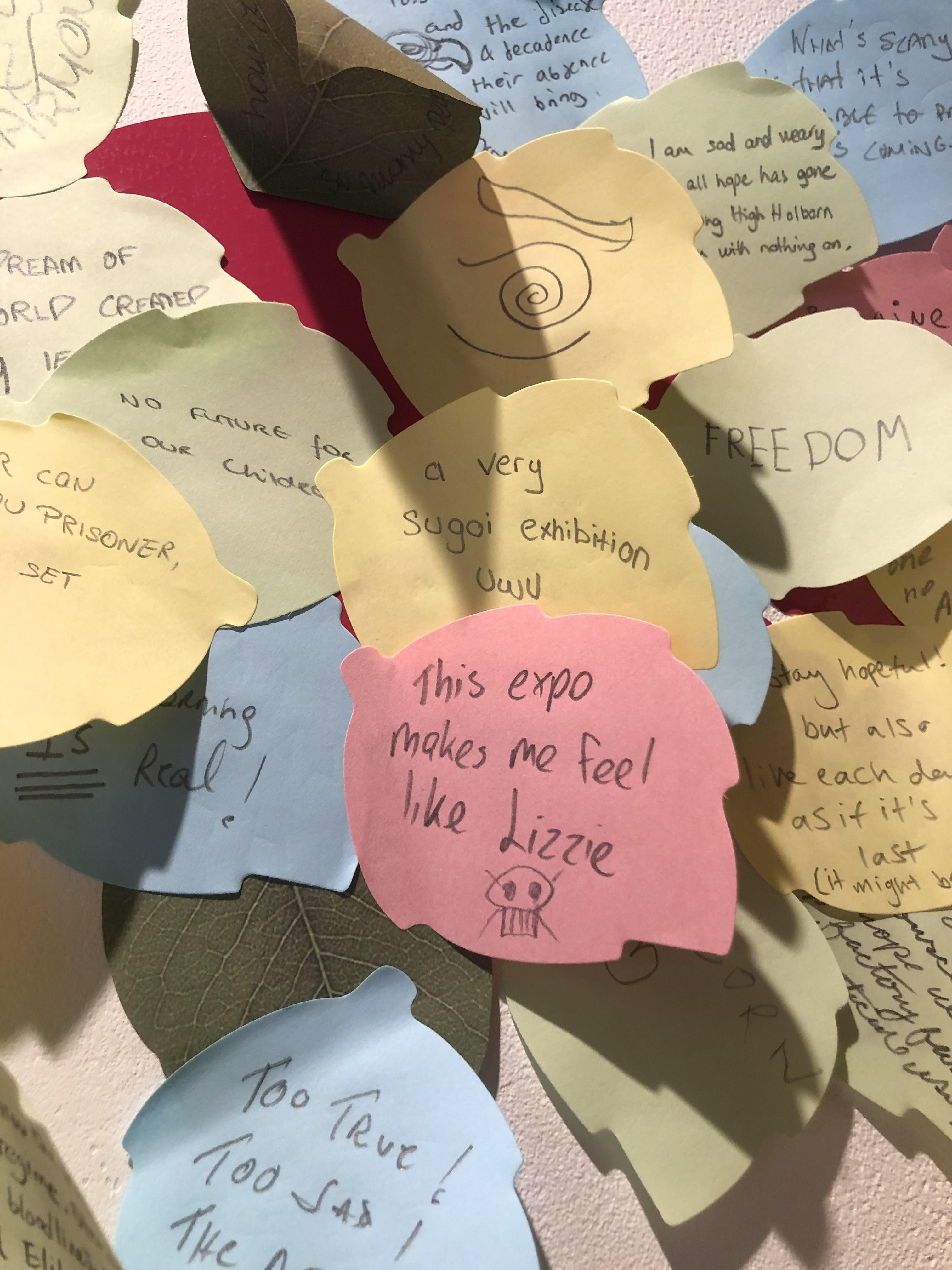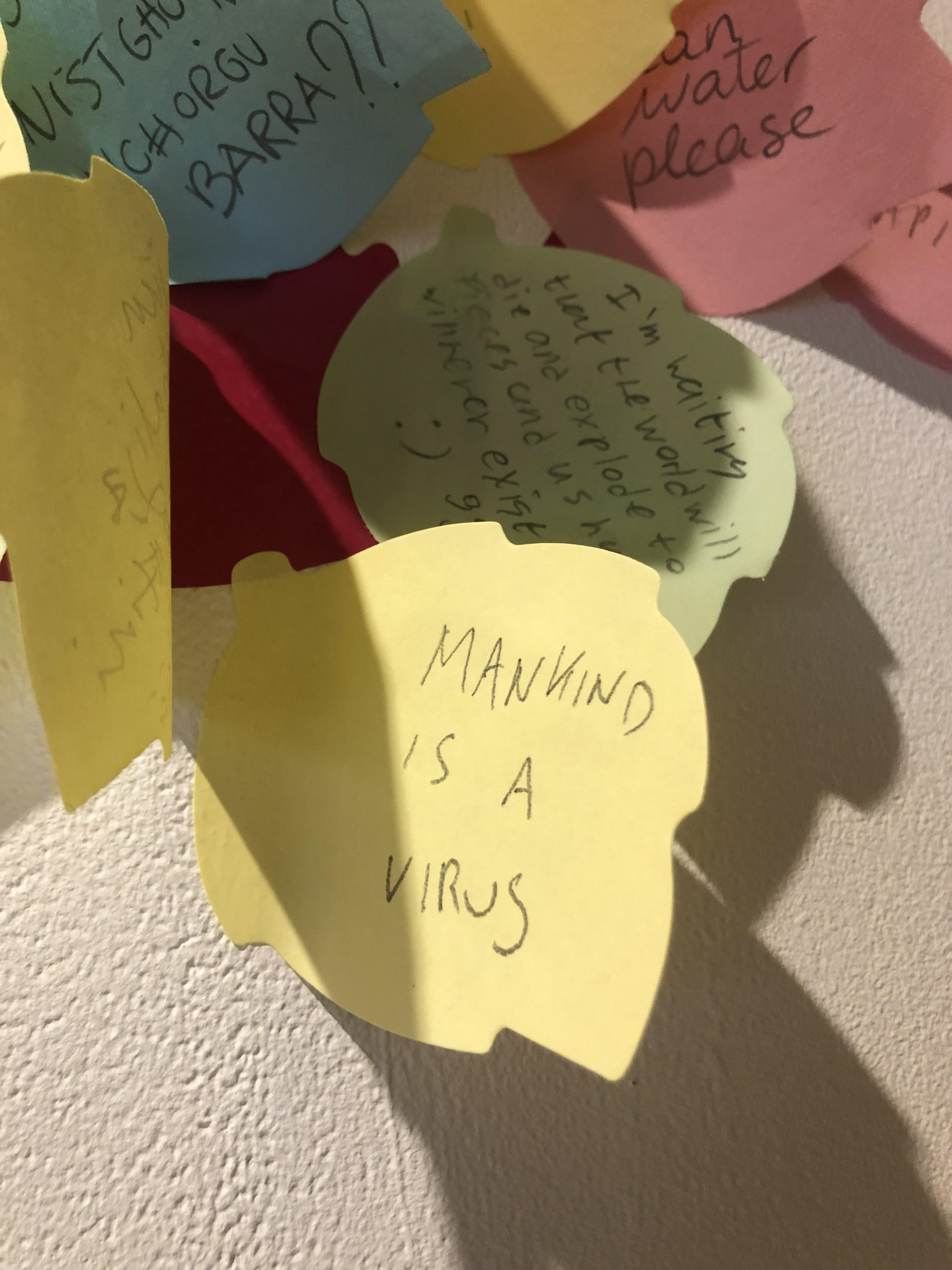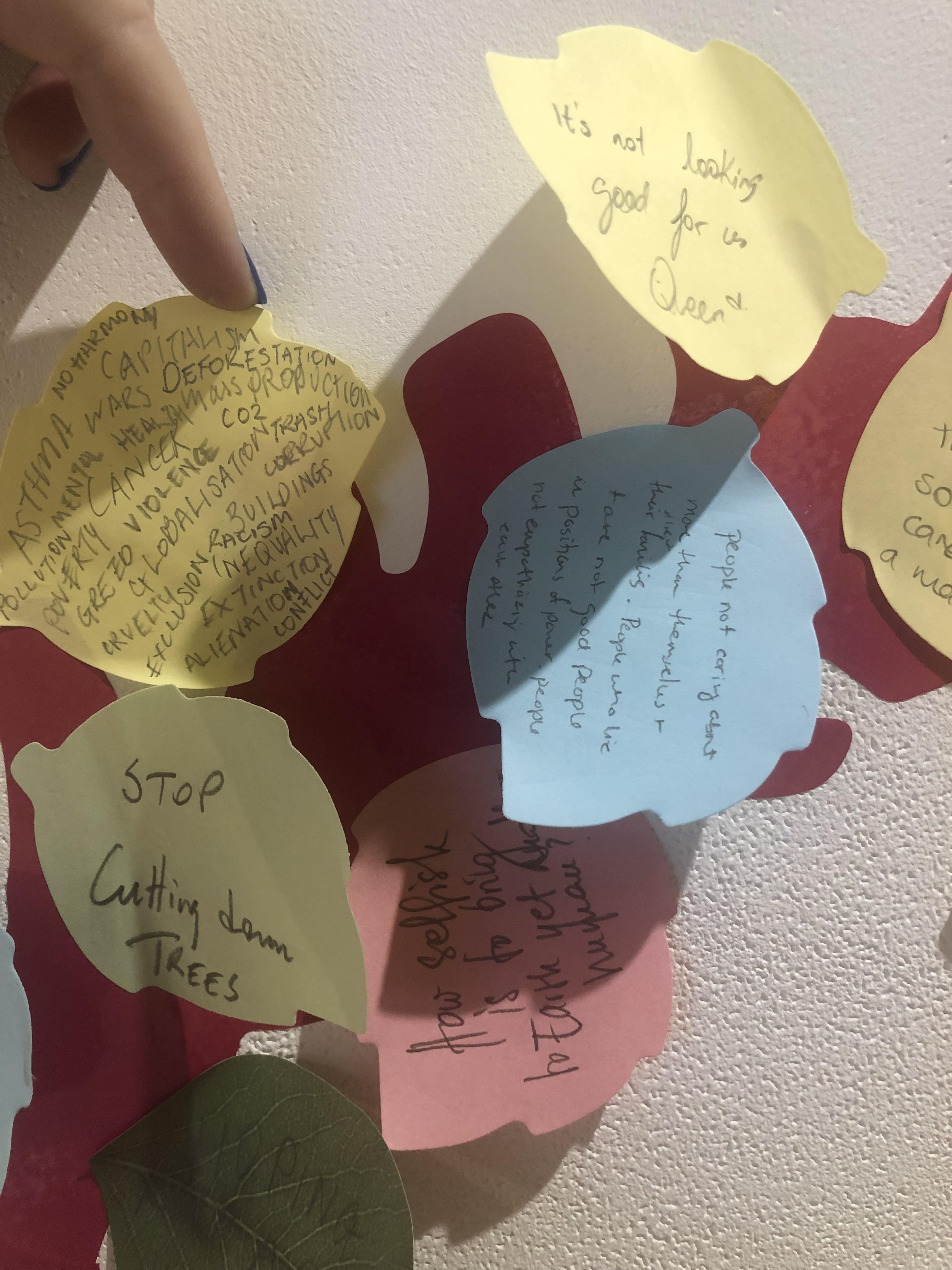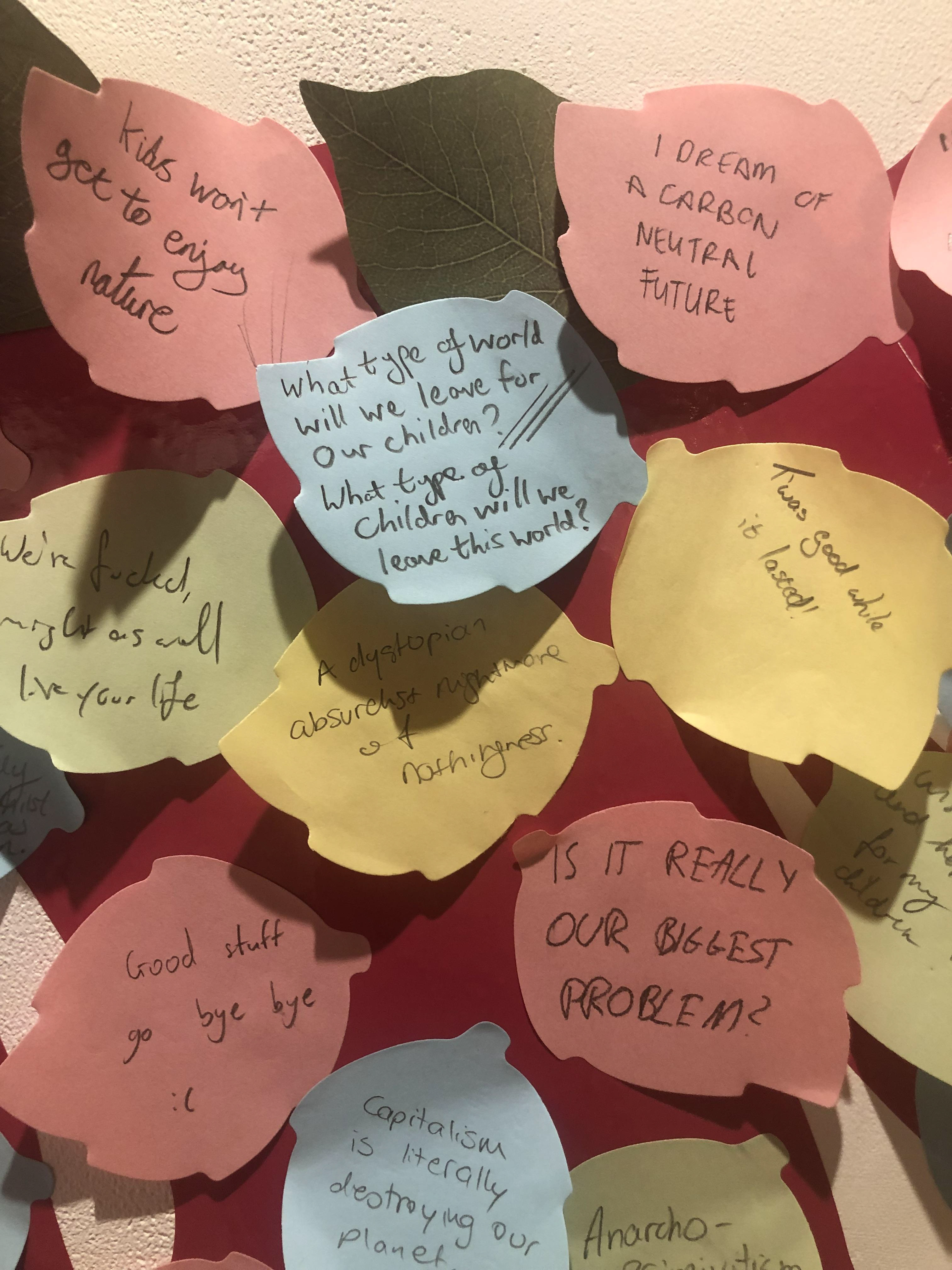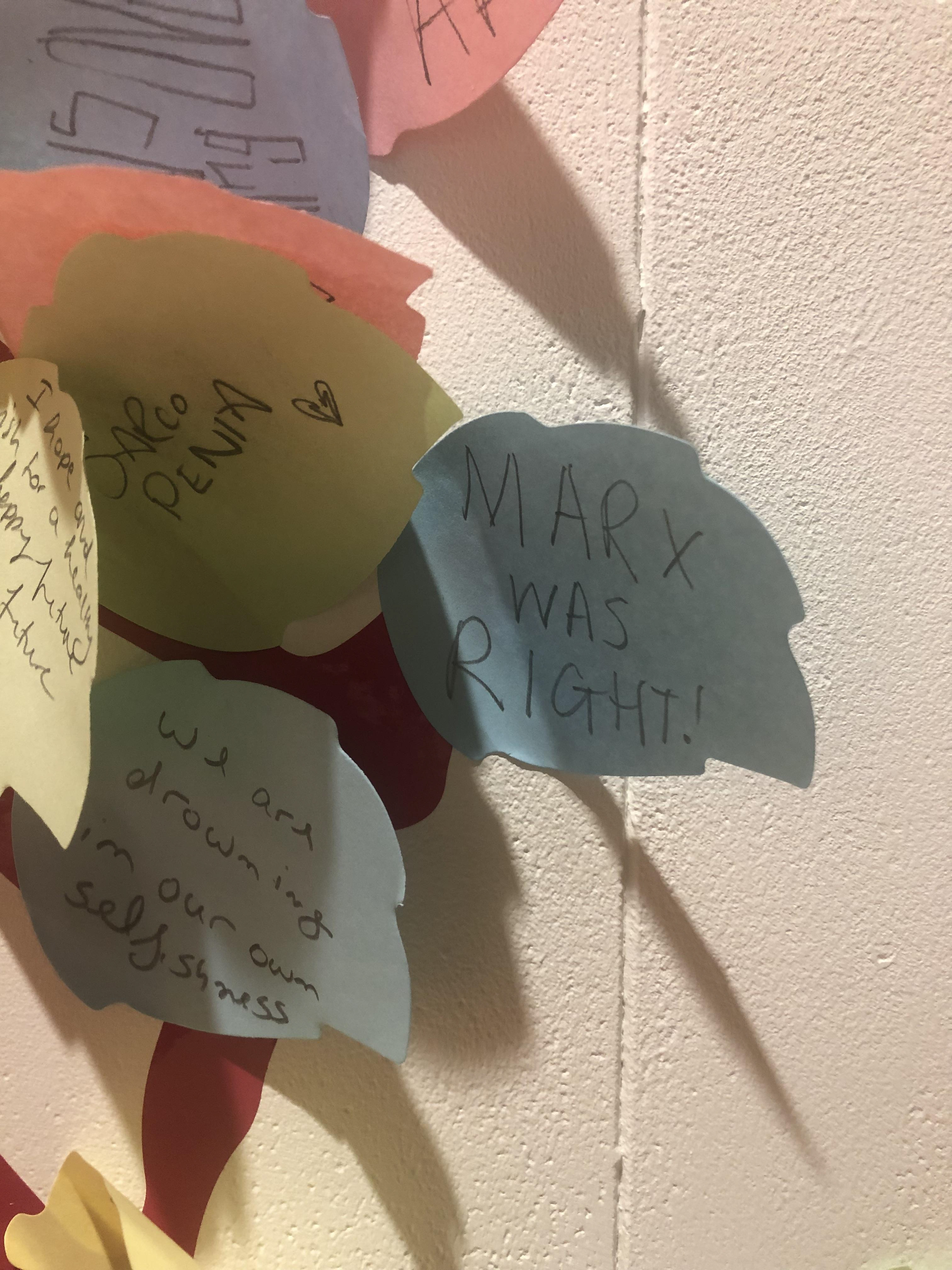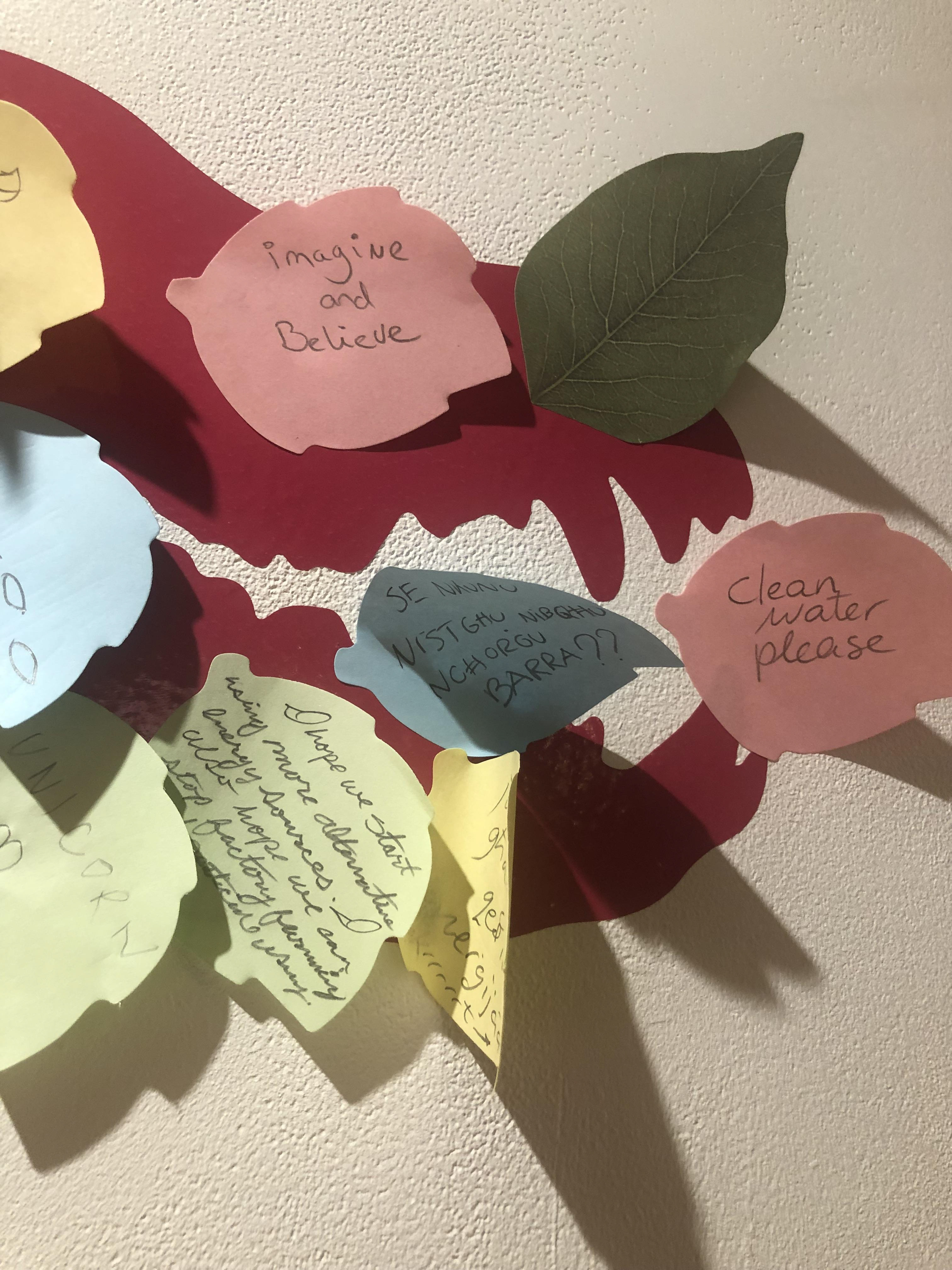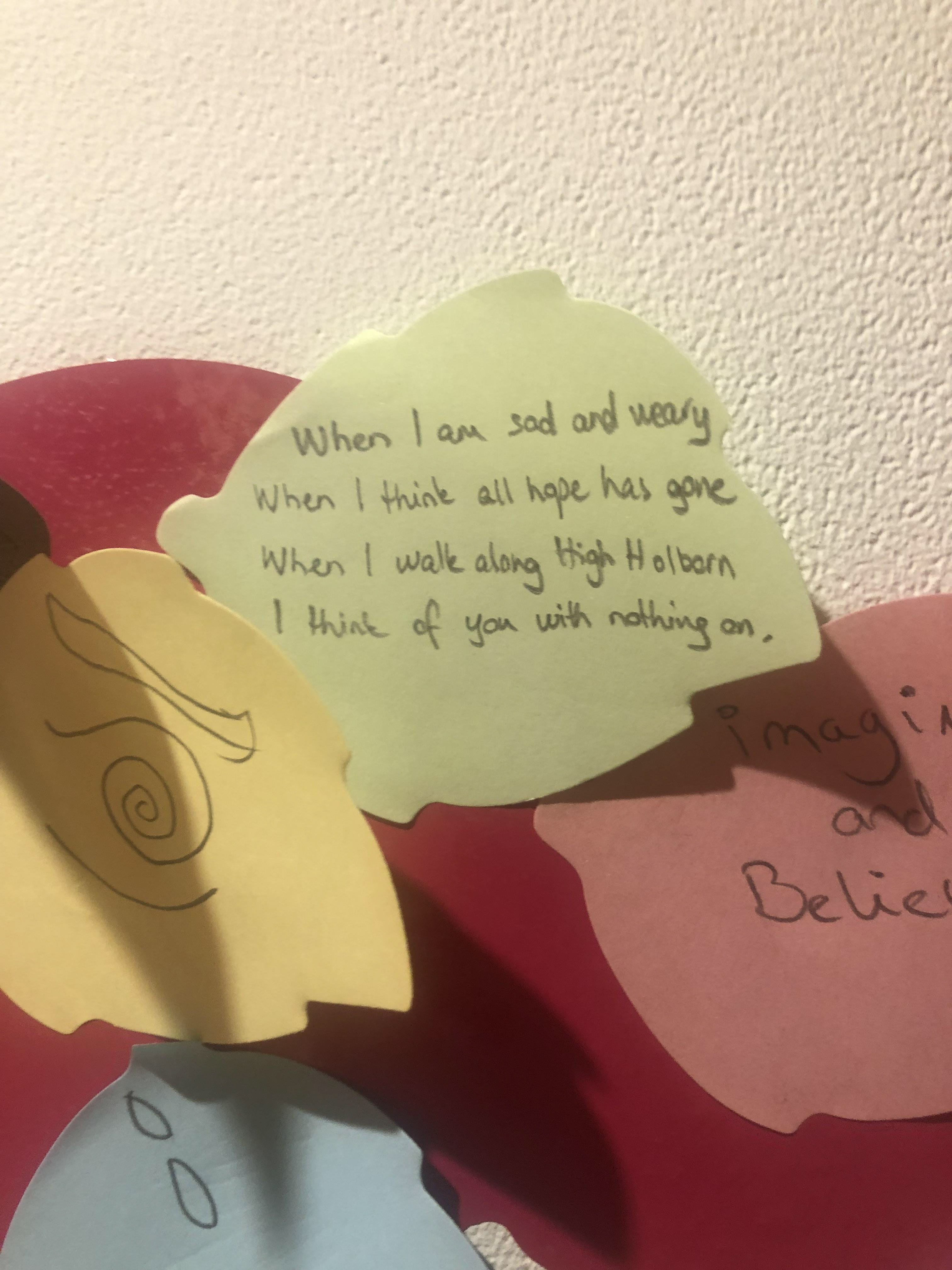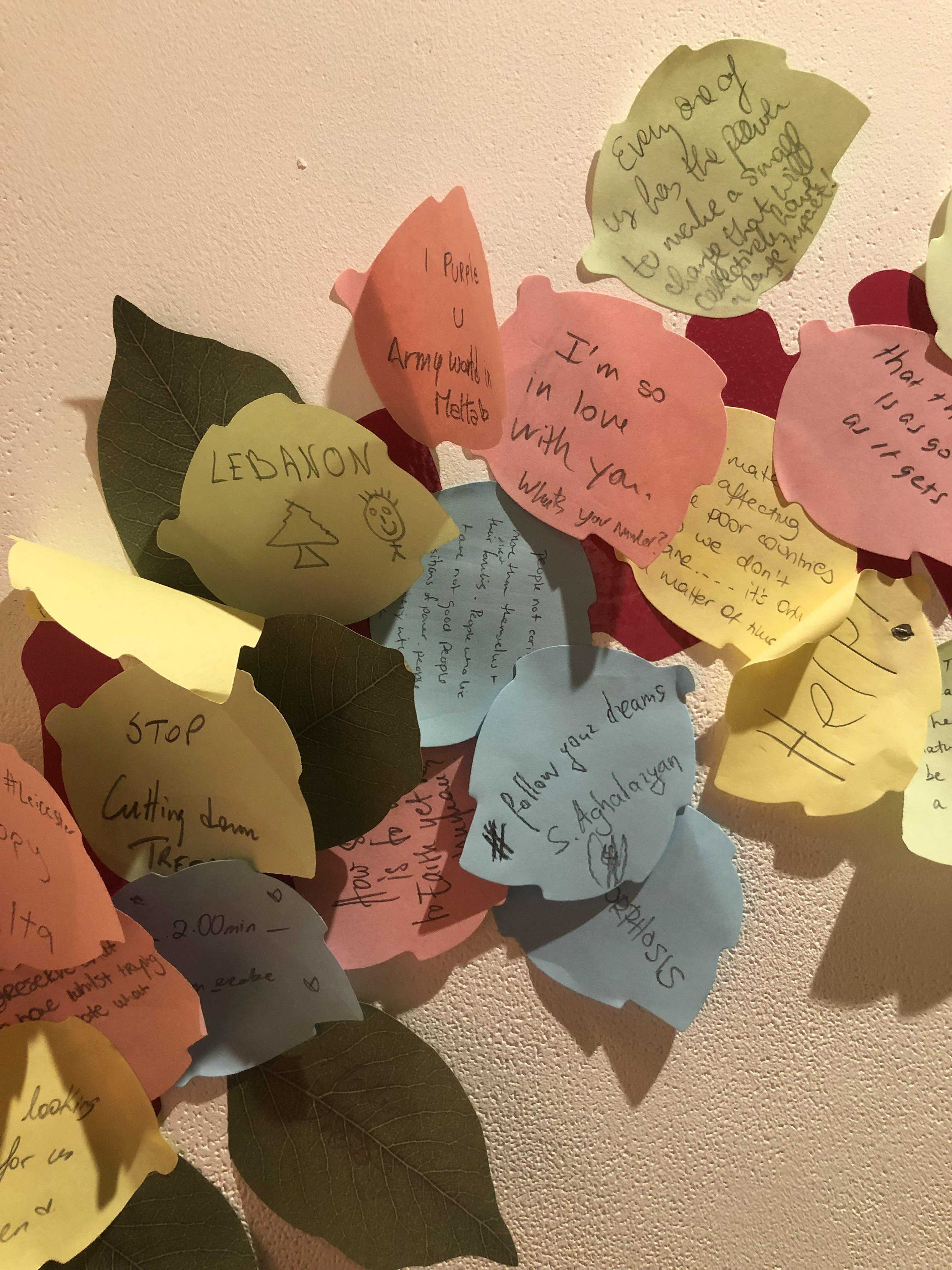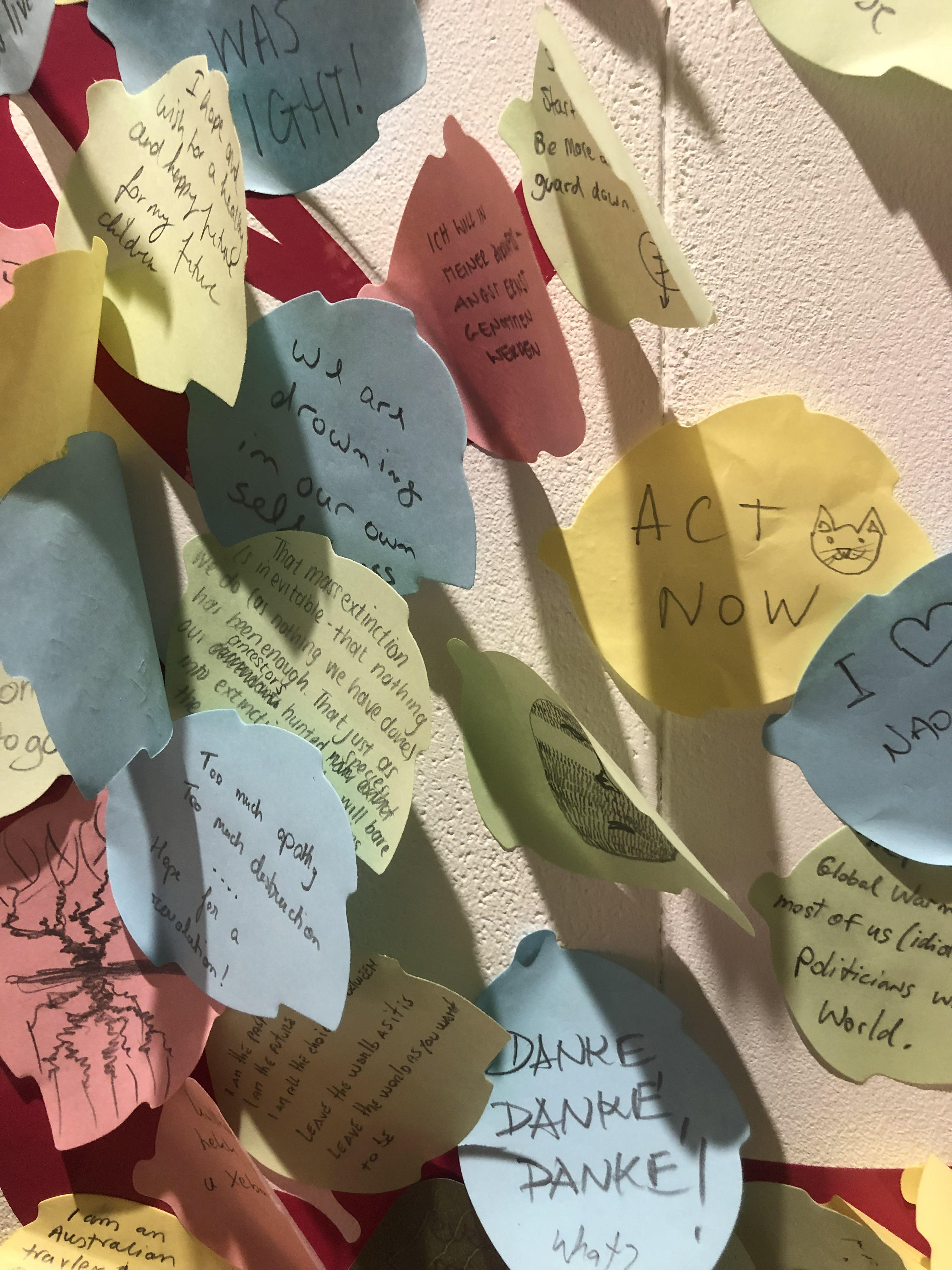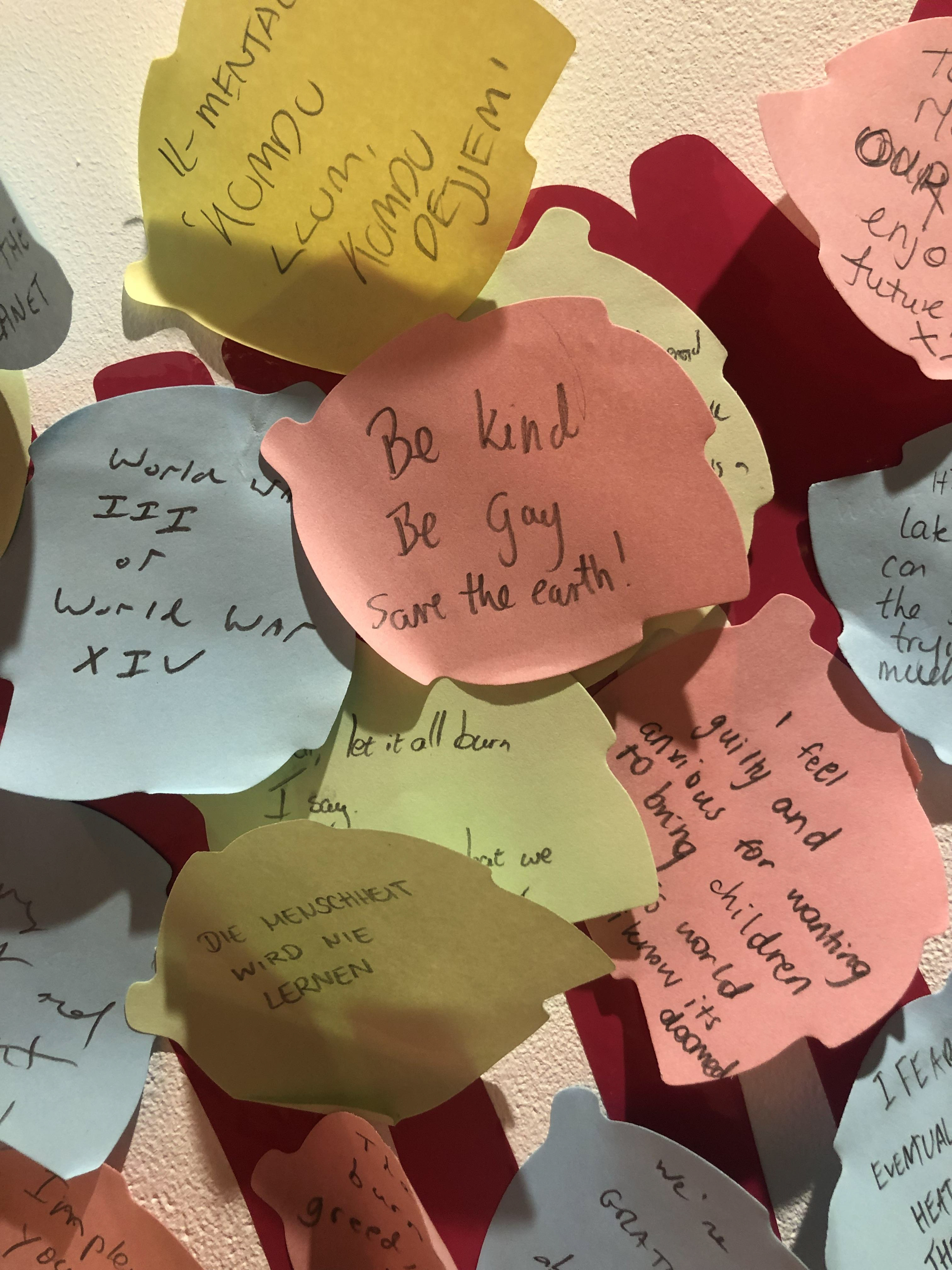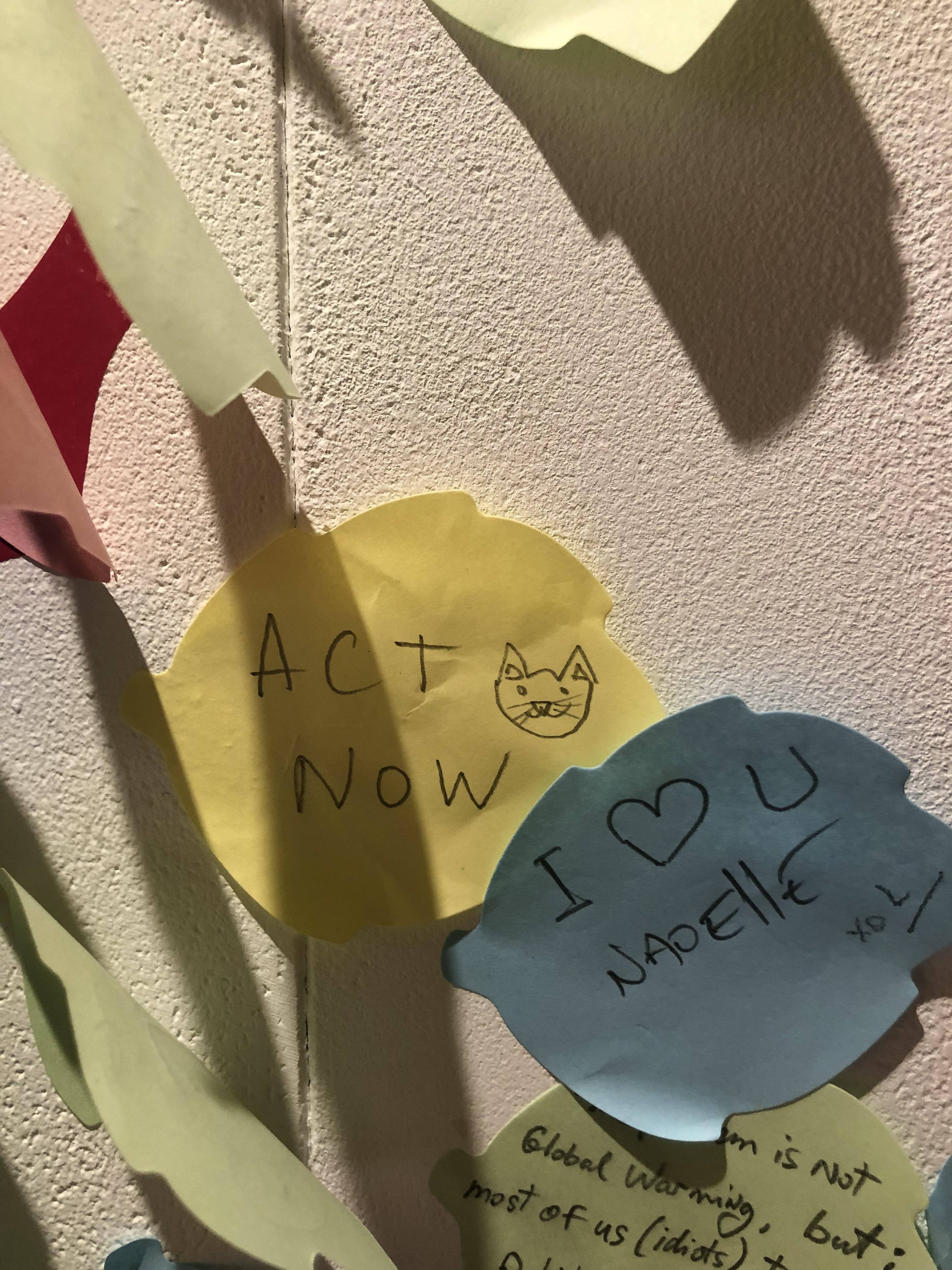Climate change is one of the most significant issues of our time and threatens all on a local and global level. Yet, as individuals, we often feel powerless about the vastness of the effects of changing climate, the destruction of our natural world, overconsumption, and late-stage capitalism. The work's overall theme draws heavily on the impact of all these contemporary issues.
A central figure present throughout the main parts of the exhibition is a deconstructed magenta Pharaoh Hound (Kelb Tal-Fenek). The national dog of Malta has long been used allegorically in iella's work as a symbol of the country's ethos. Various stages of decay and distress intend to provoke discussion and a sense of uncertainty.
A photoshop mockup of what I planned the exhibition to look like.
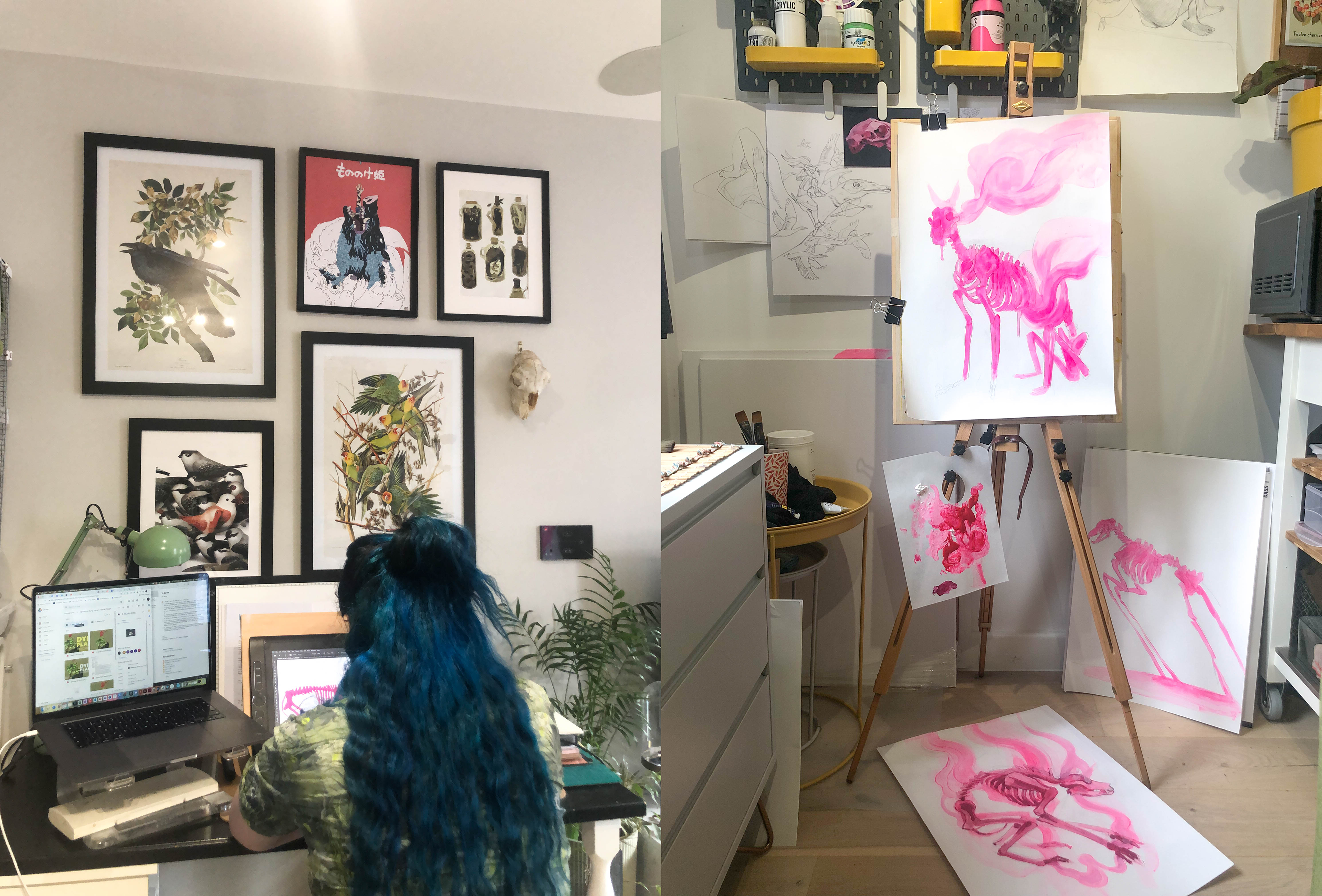
Part one features fourteen paintings - 'Way of Sorrows'; representing the processes of ecosystem collapse. This series is based on the Stations of the cross, a Christian pilgrimage route that symbolises the path Jesus walked to Mount Calvary. In each painting, the central figure represents different climate-related catastrophes. Wisps of smoke, burning, rising water levels and dry conditions invoke a sense of urgency and disturbance. Magenta is the primary colour used in this body of work - a combination of the artist's design background (process magenta in printing) and a nod to the Gram staining technique used to identify harmful bacteria.
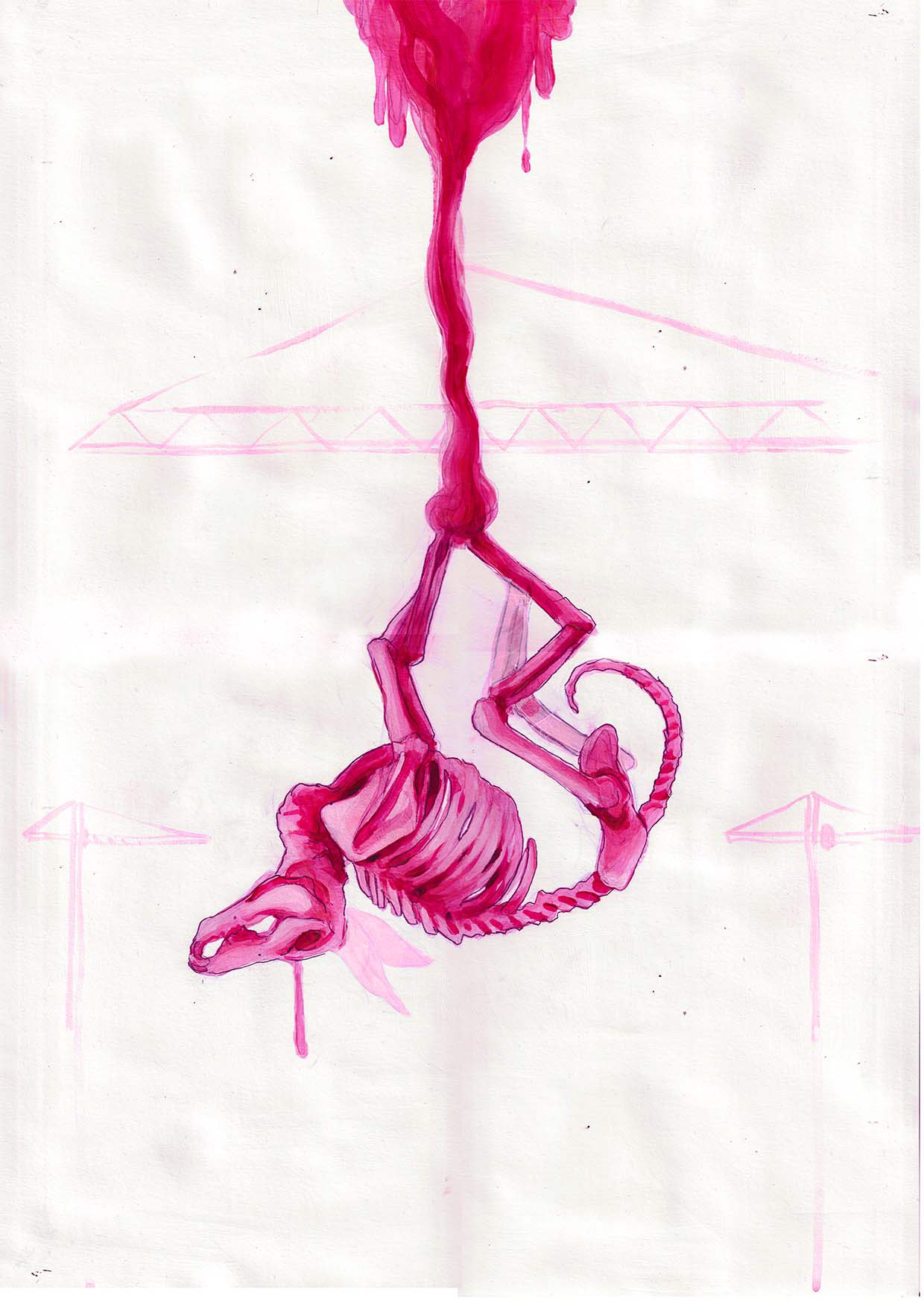

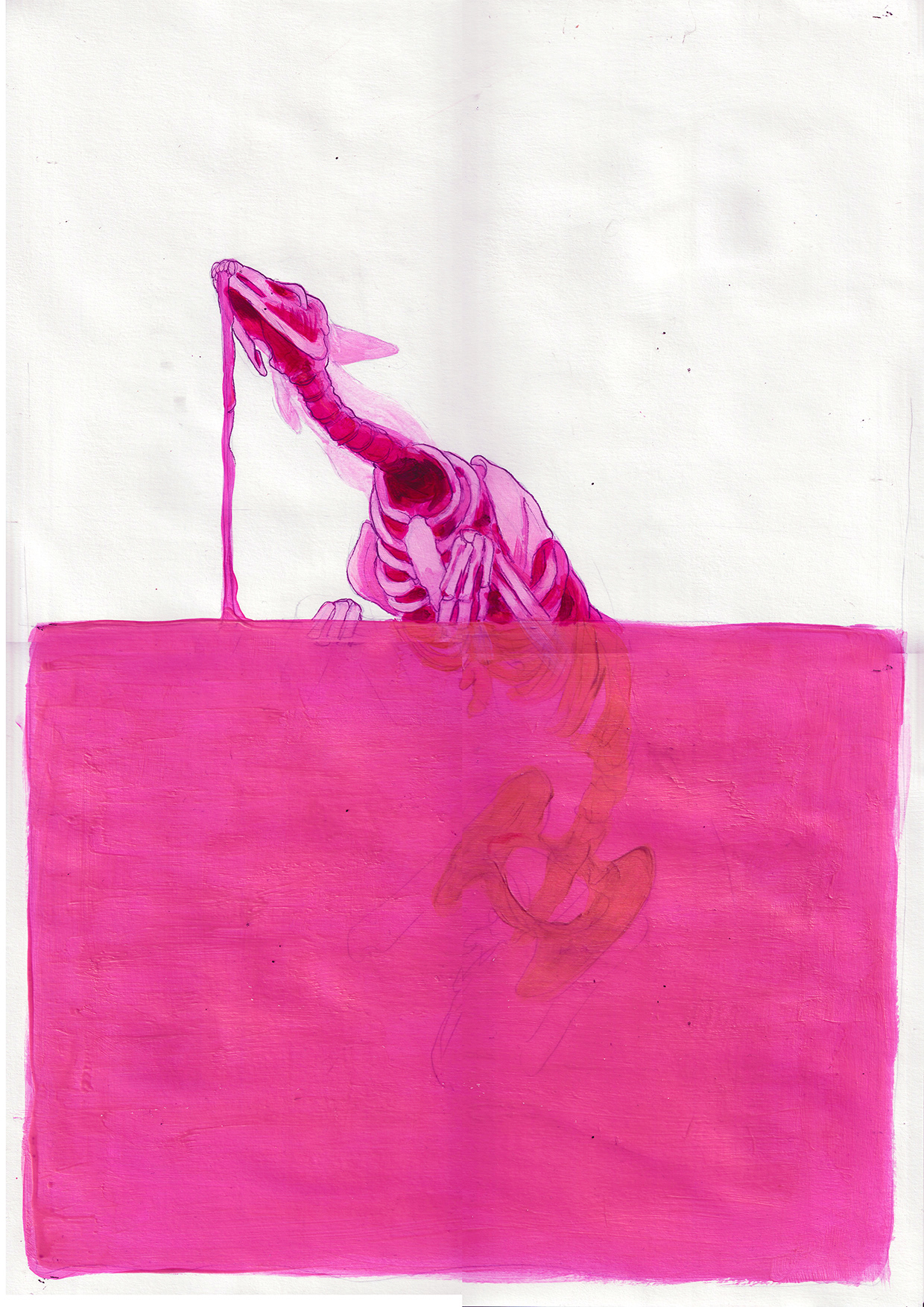

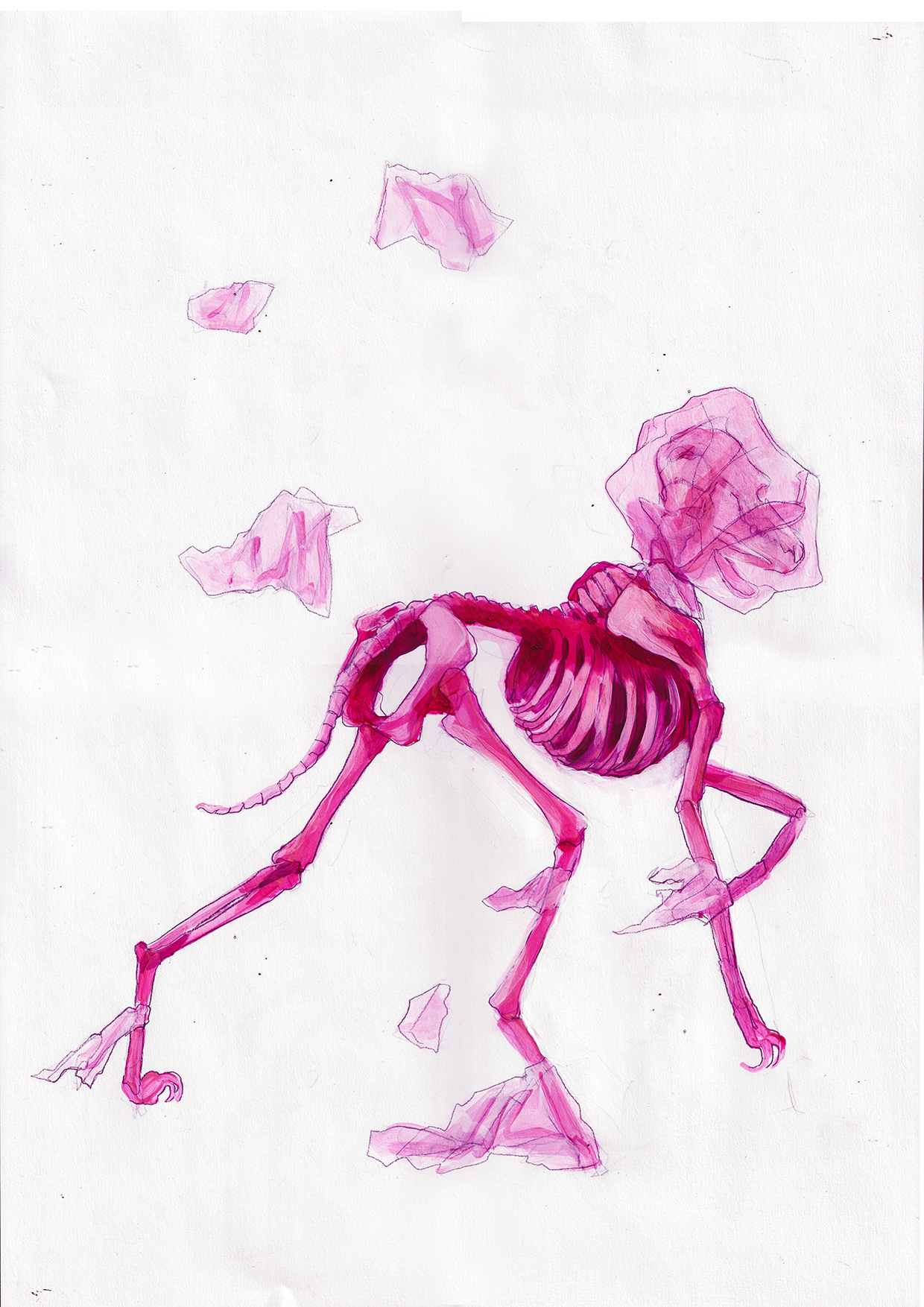

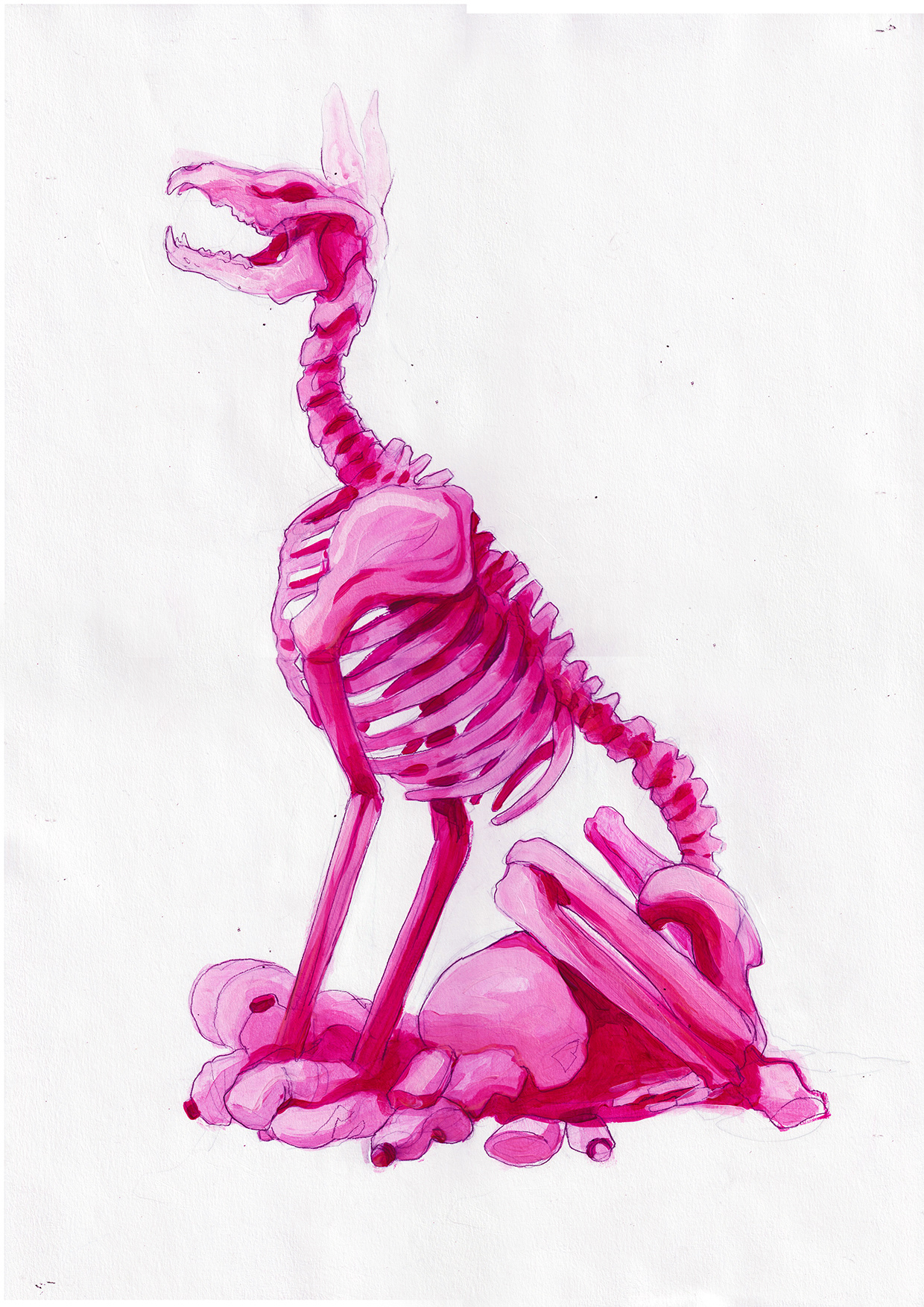
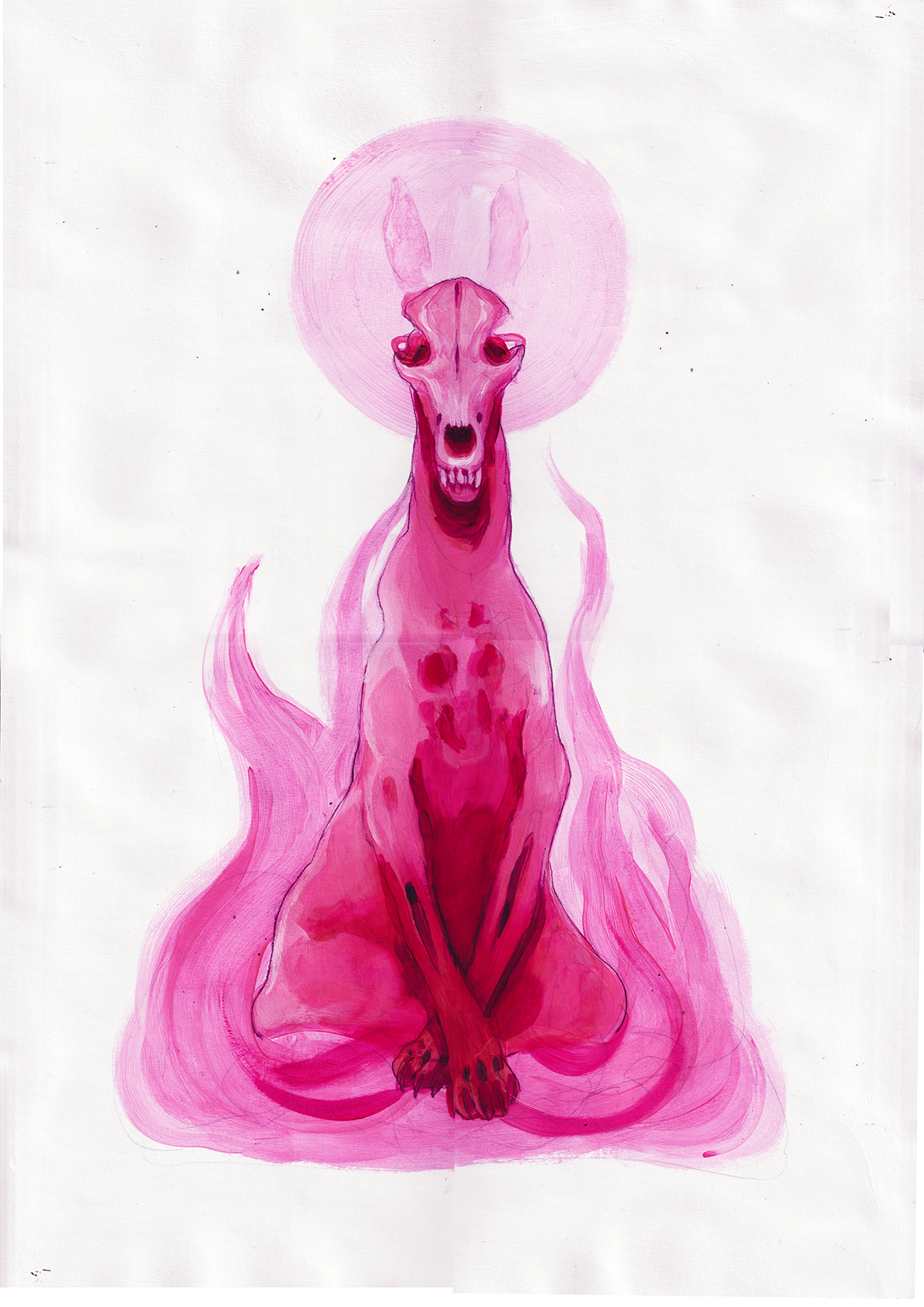
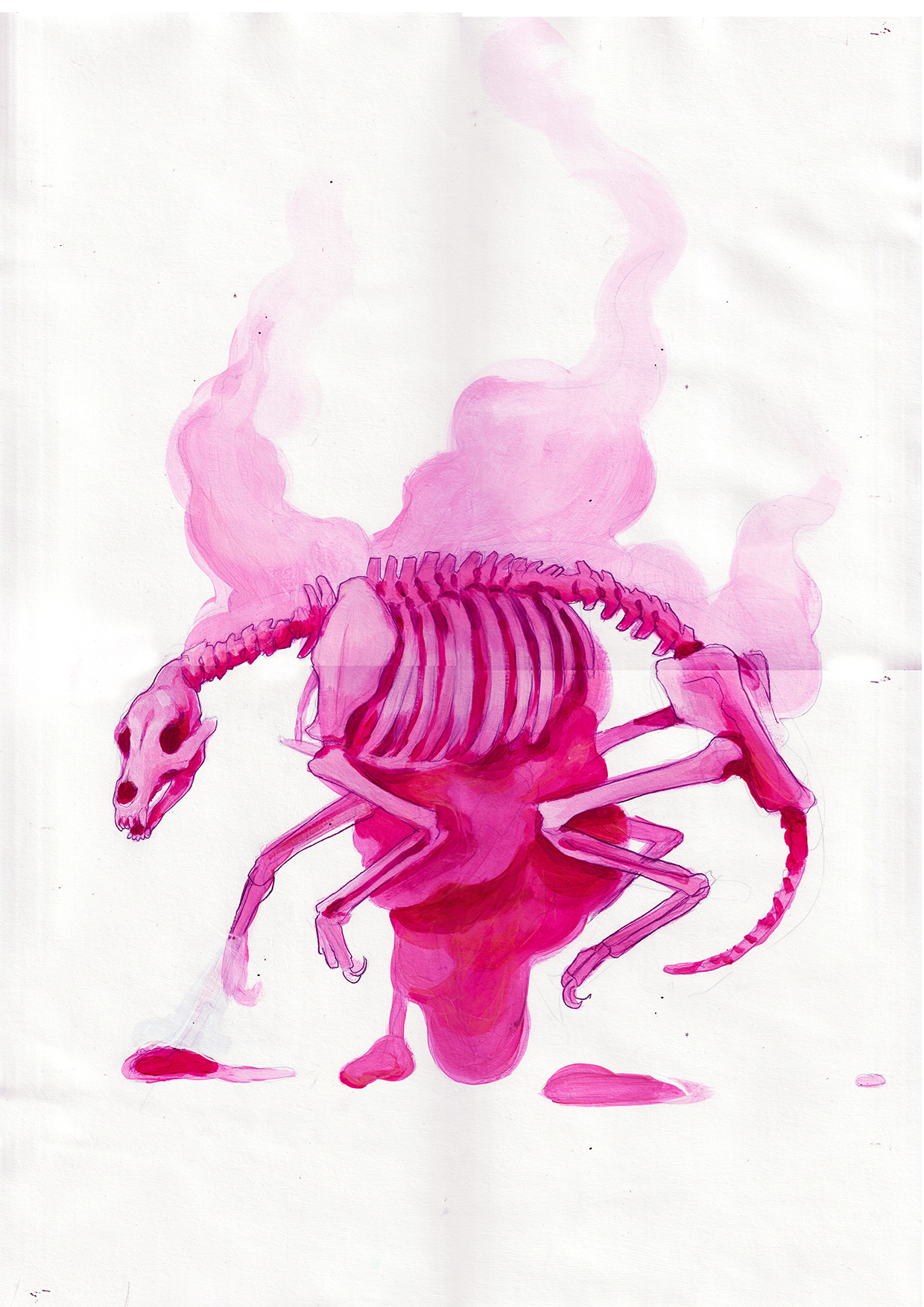


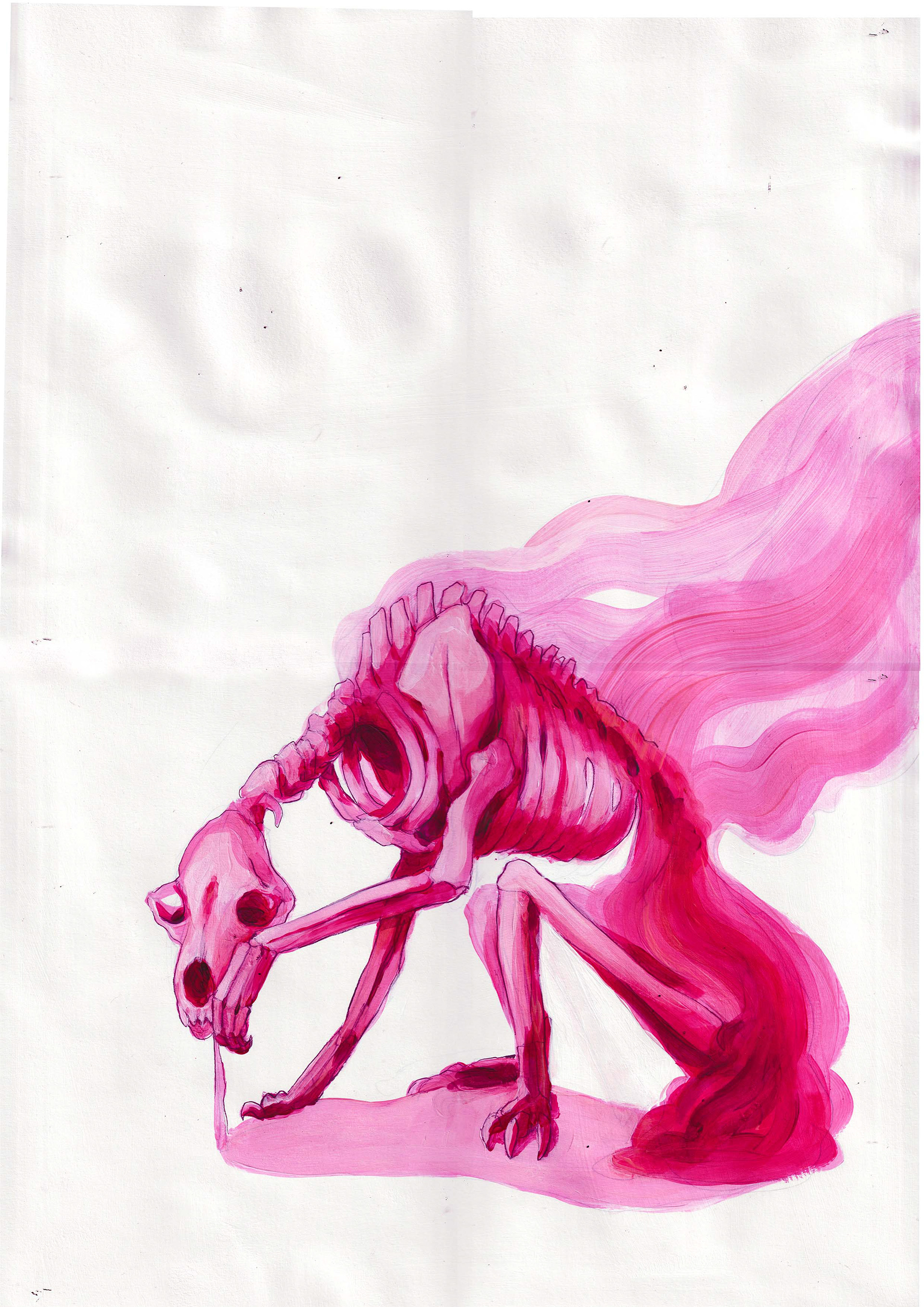
The exhibition's second half, 'Tales from a dying planet,' is a collection of digitally coloured pencil illustrations from the past few years that feature unusual characters and creatures. They inhabit the work and serve as allegories of anxiety, languish and, in some cases - hope.


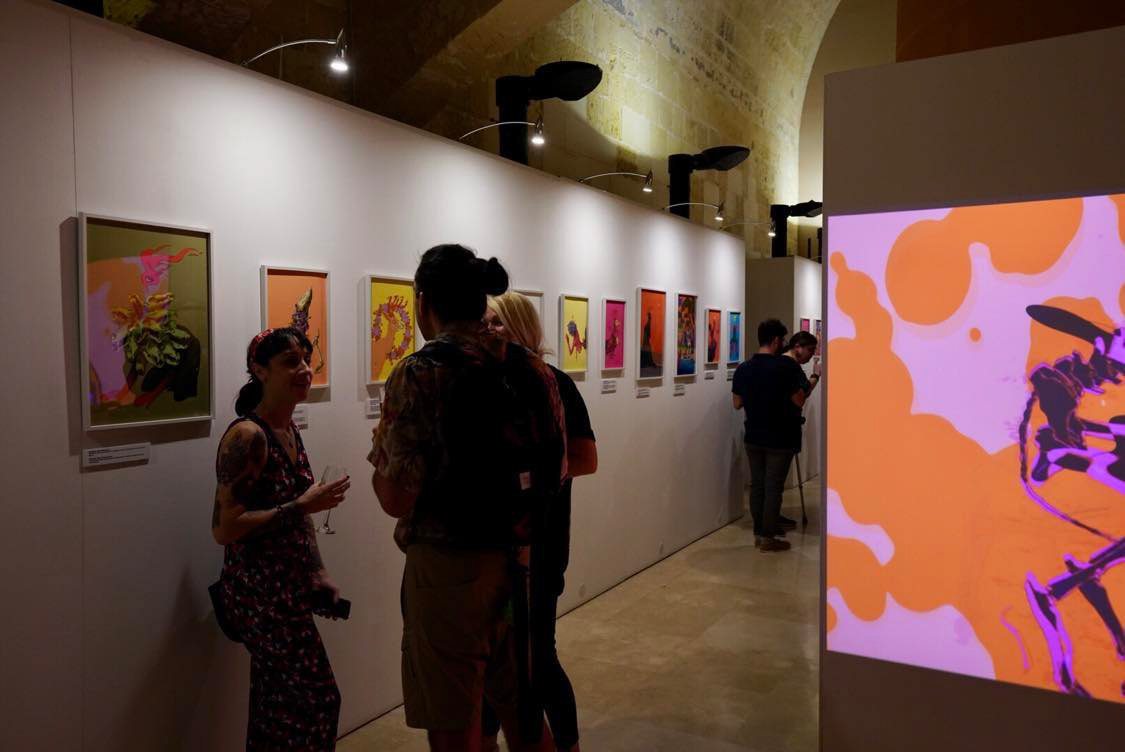
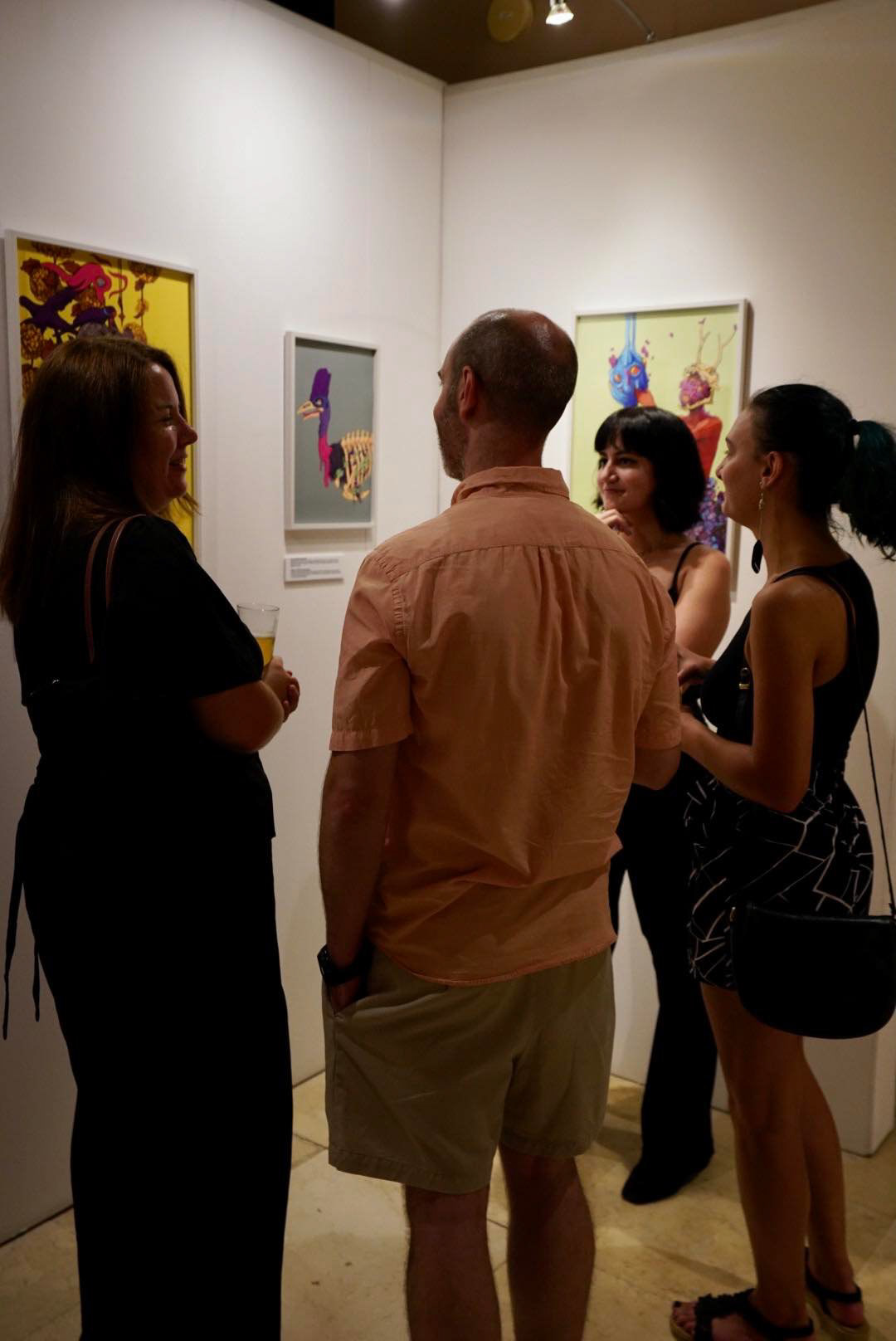
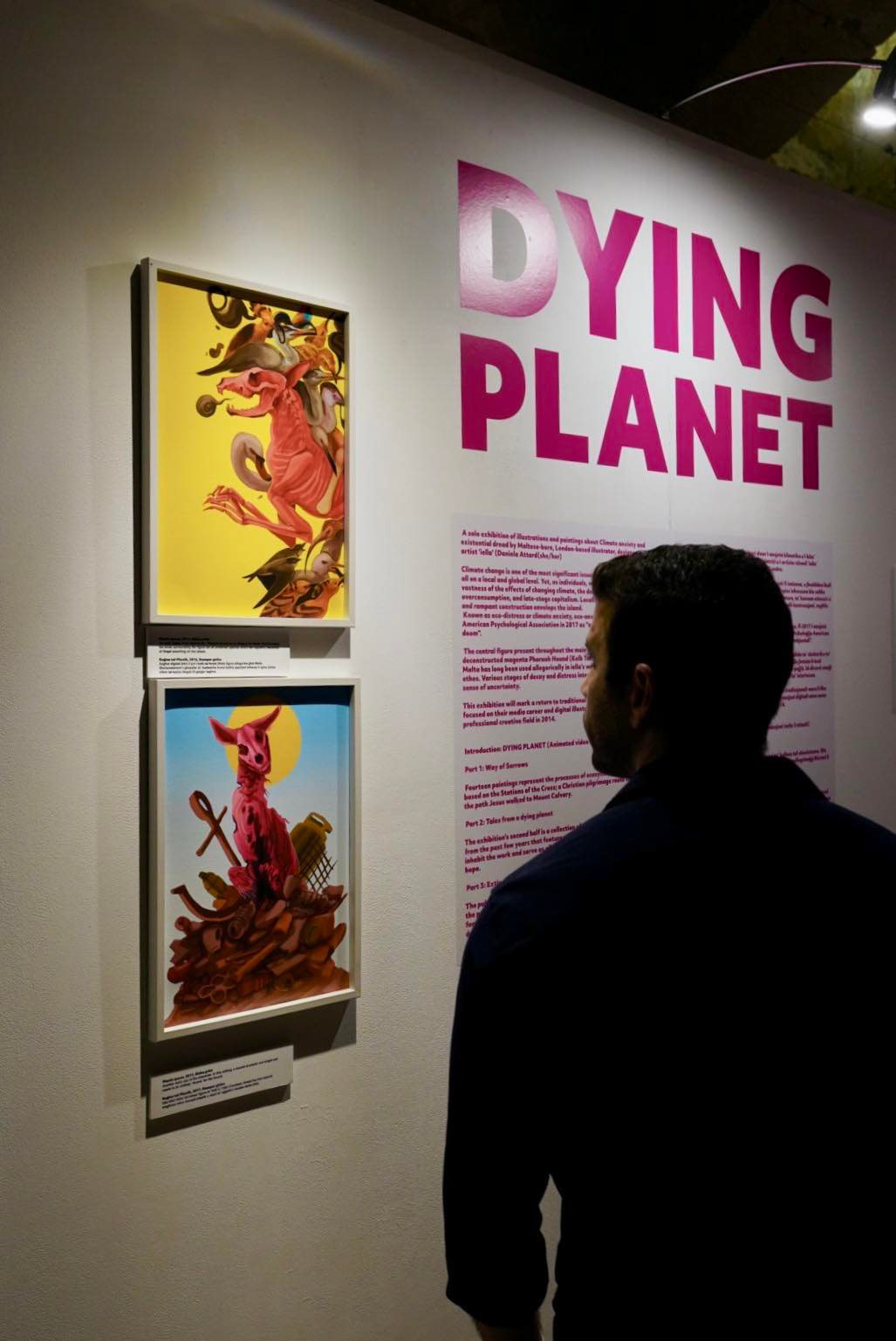
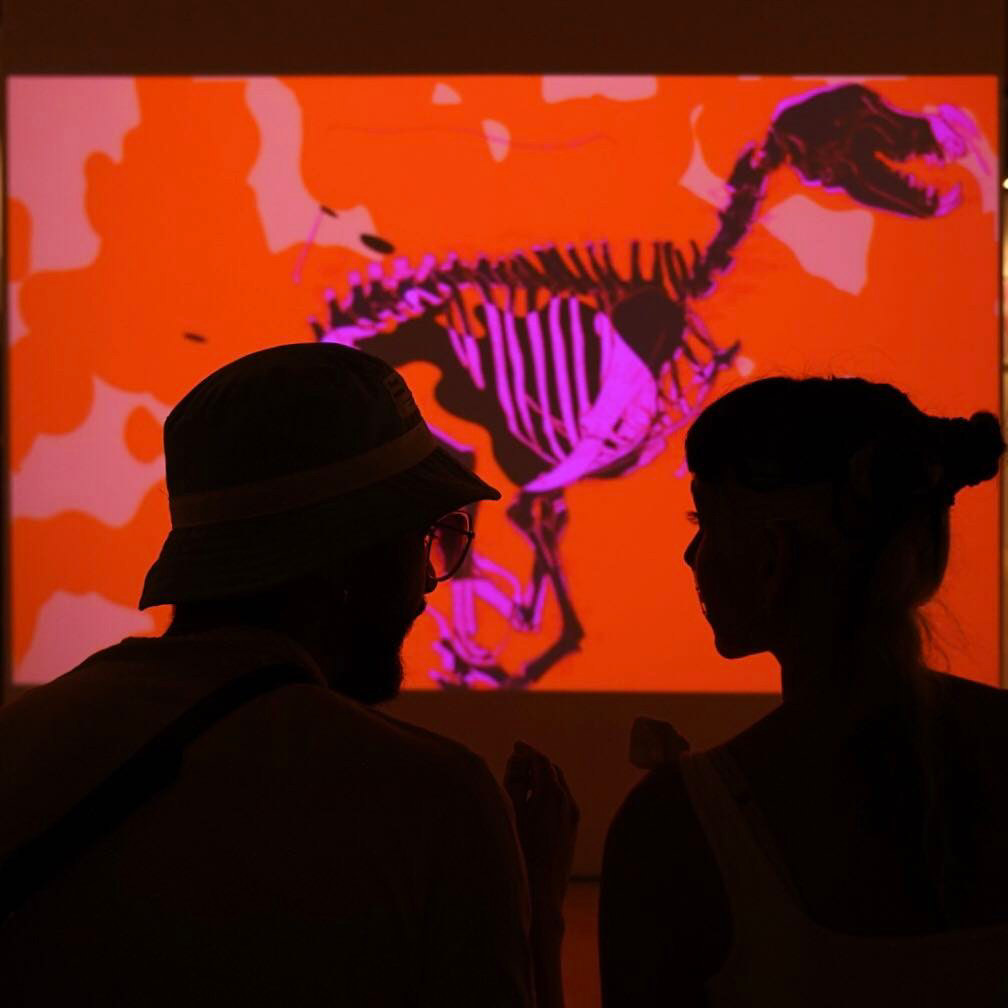

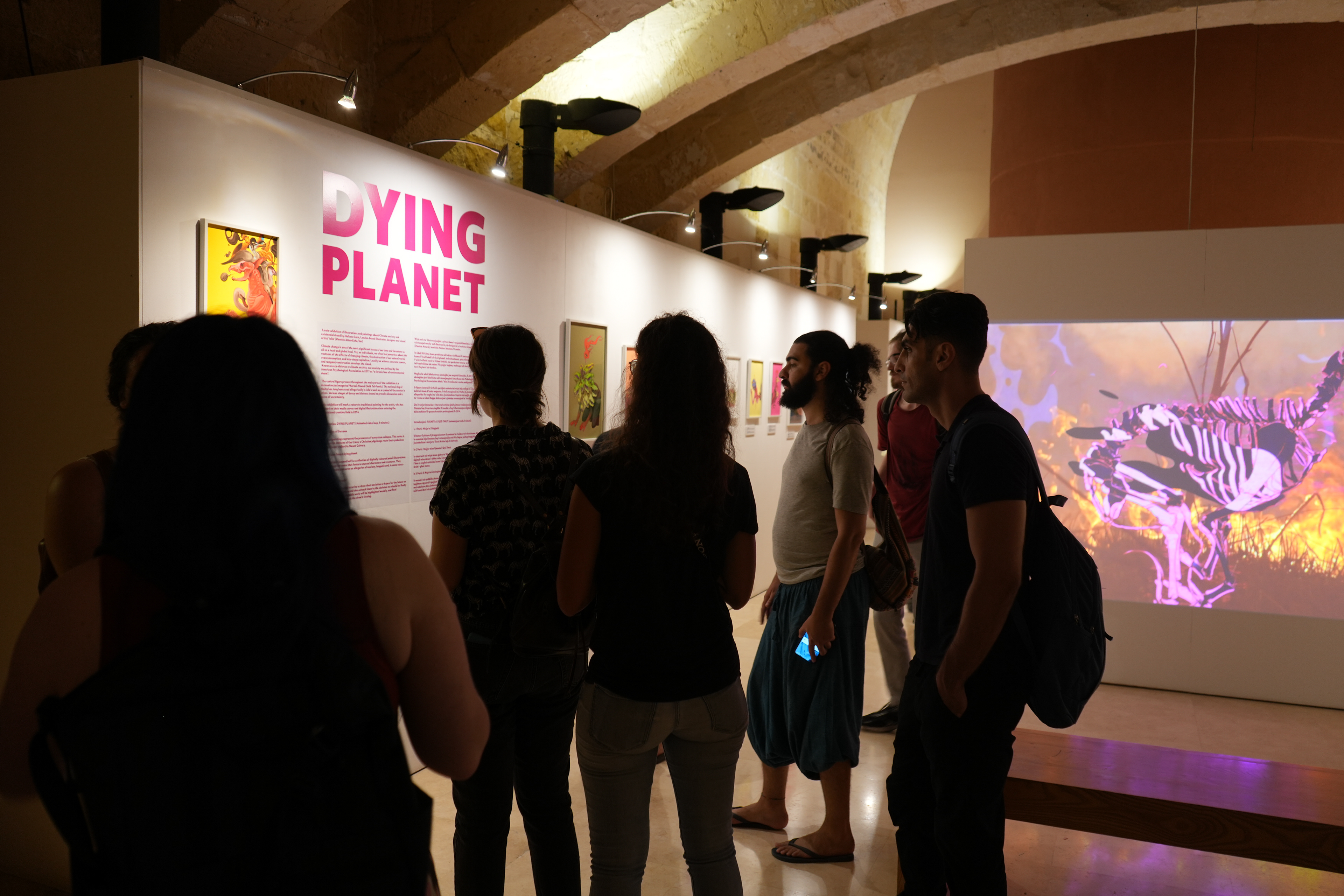
Animation made in Aftereffects named ' DYING PLANET' - looping animation with video overlay (videos licensed via Adobe Stock)
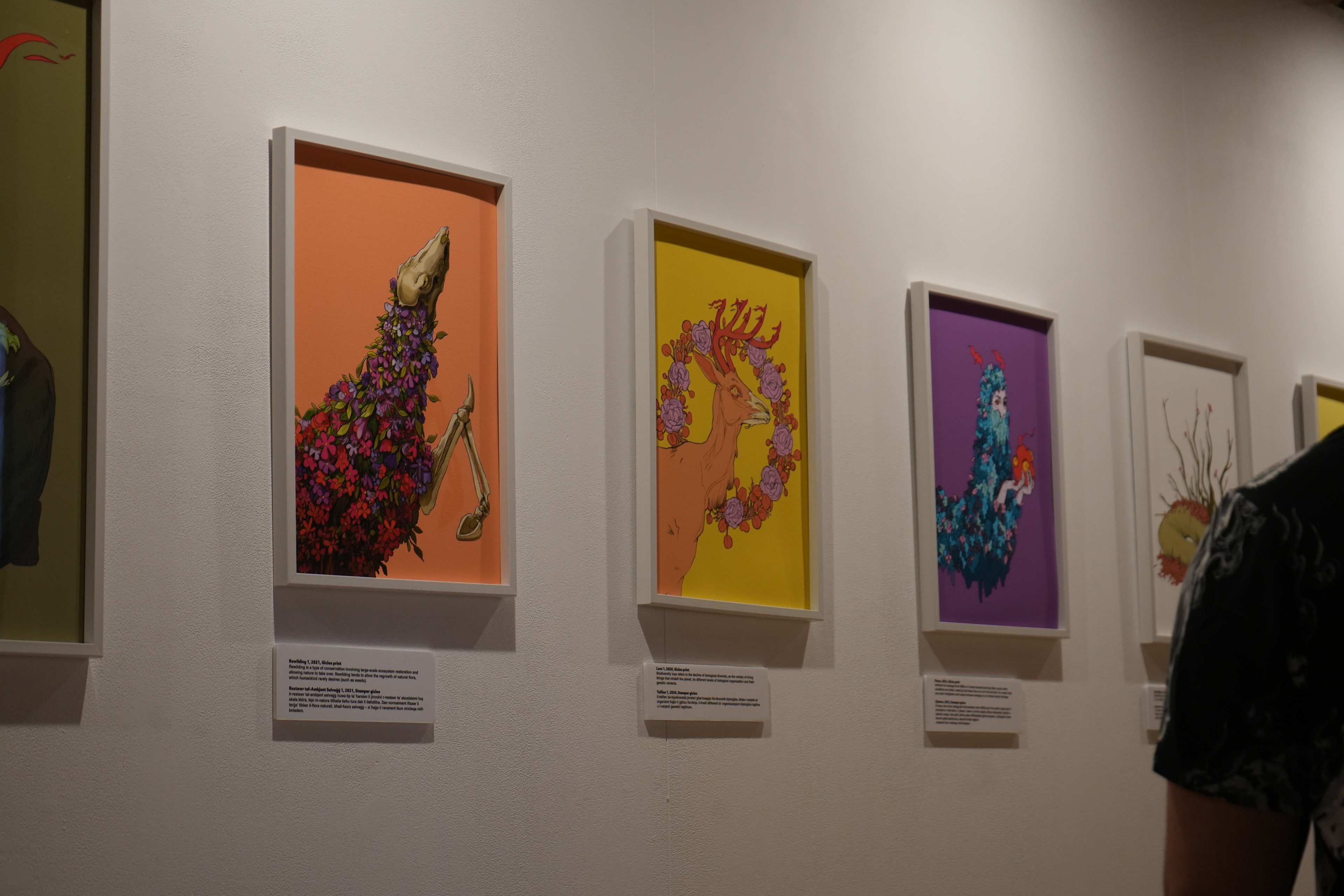

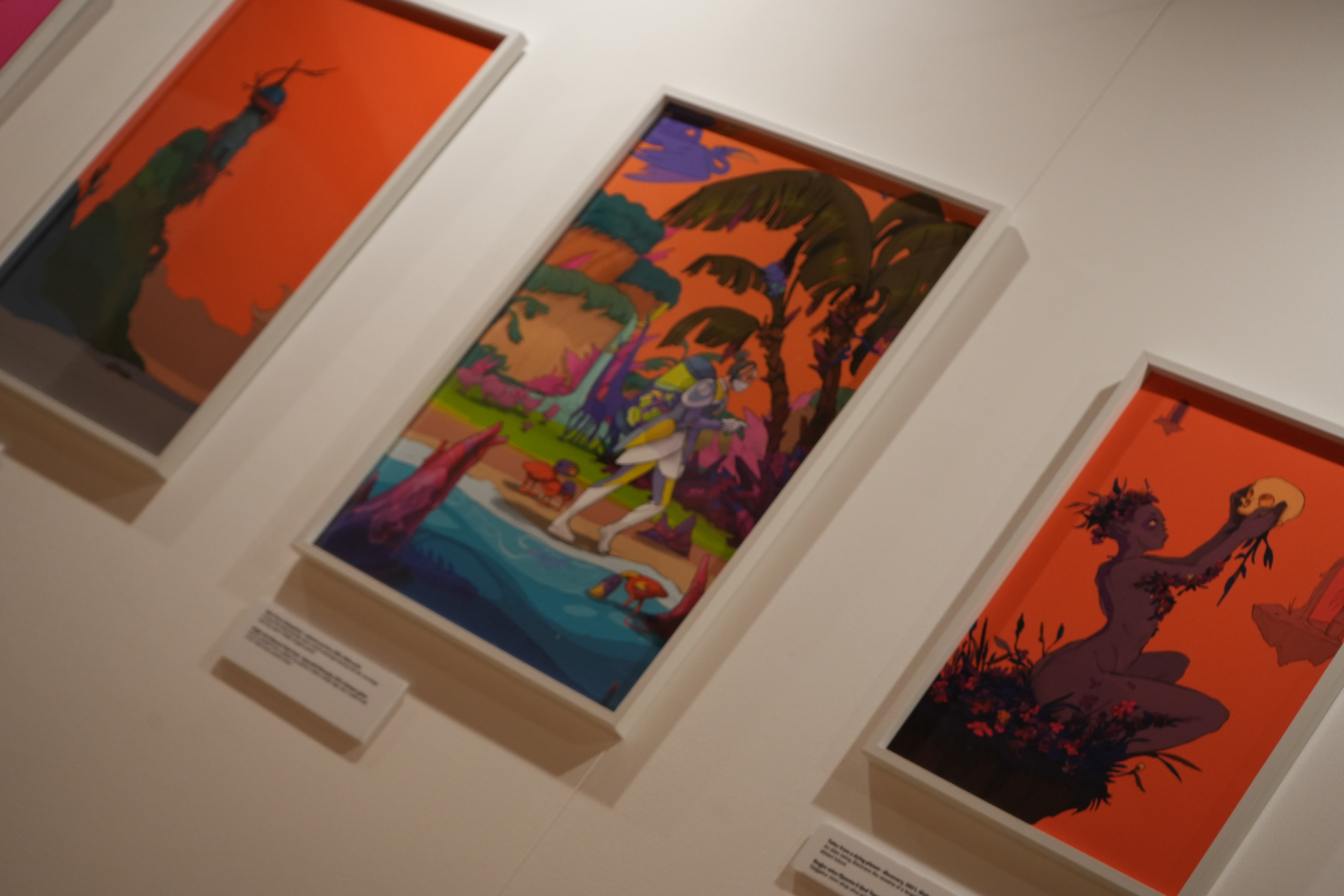


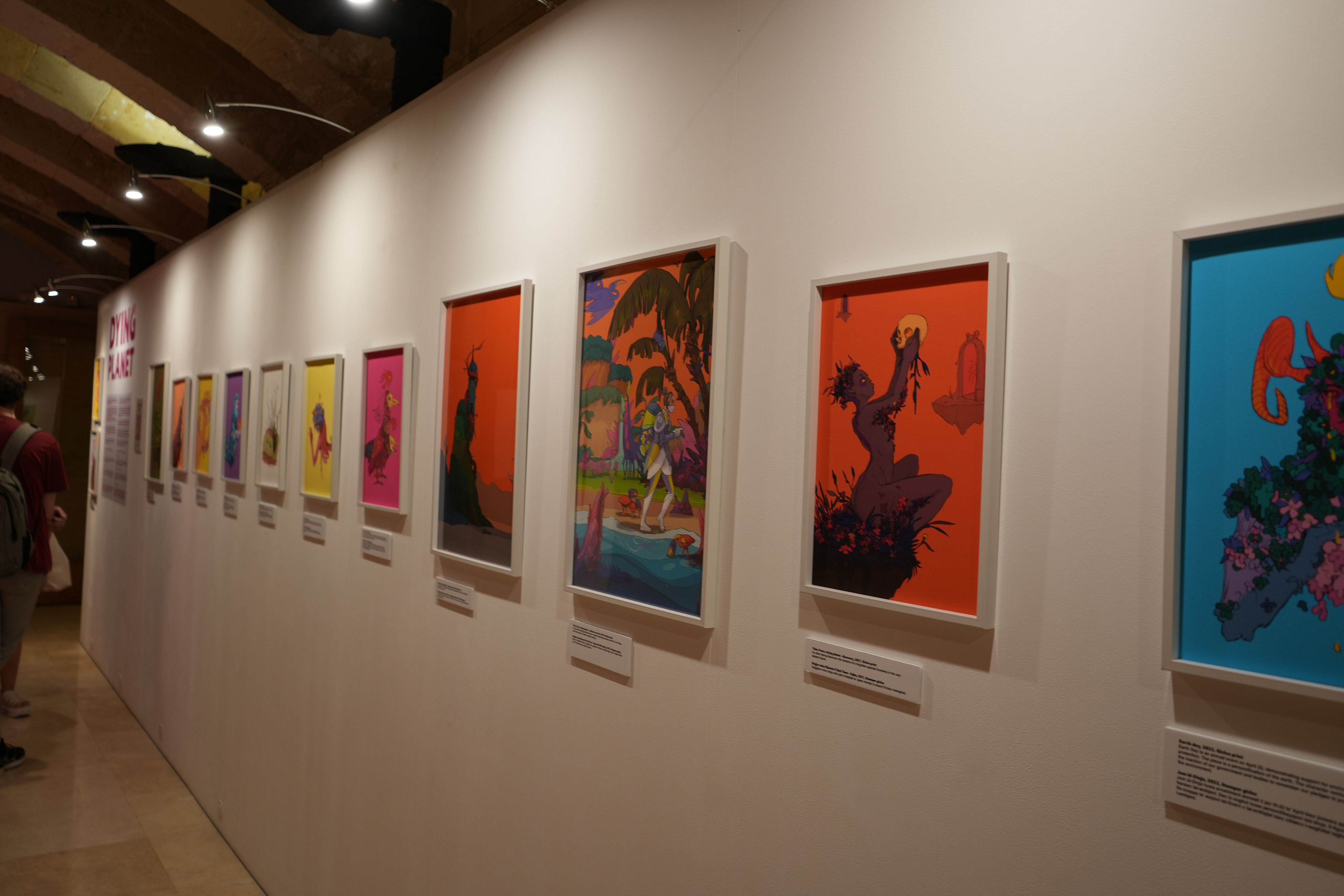
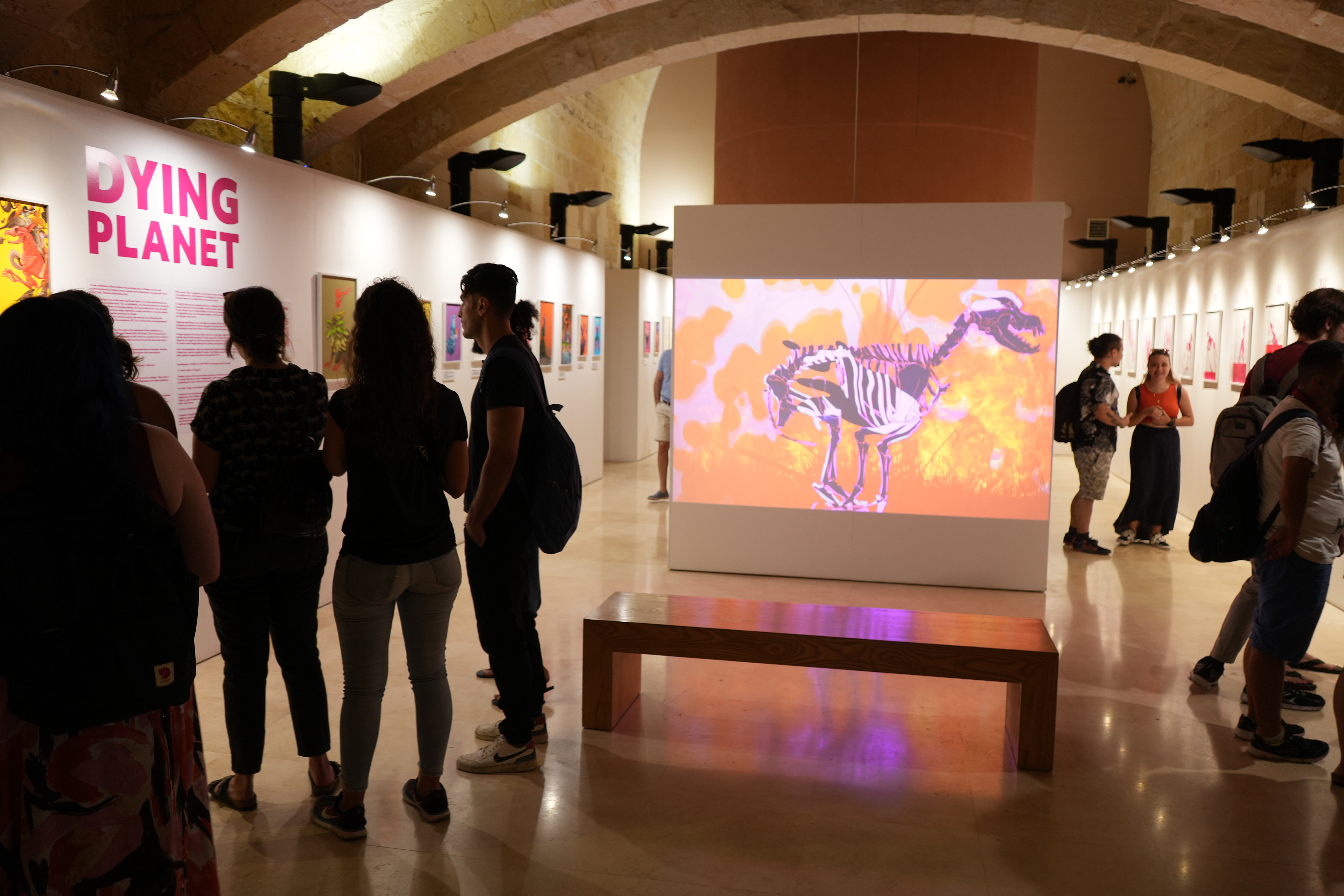
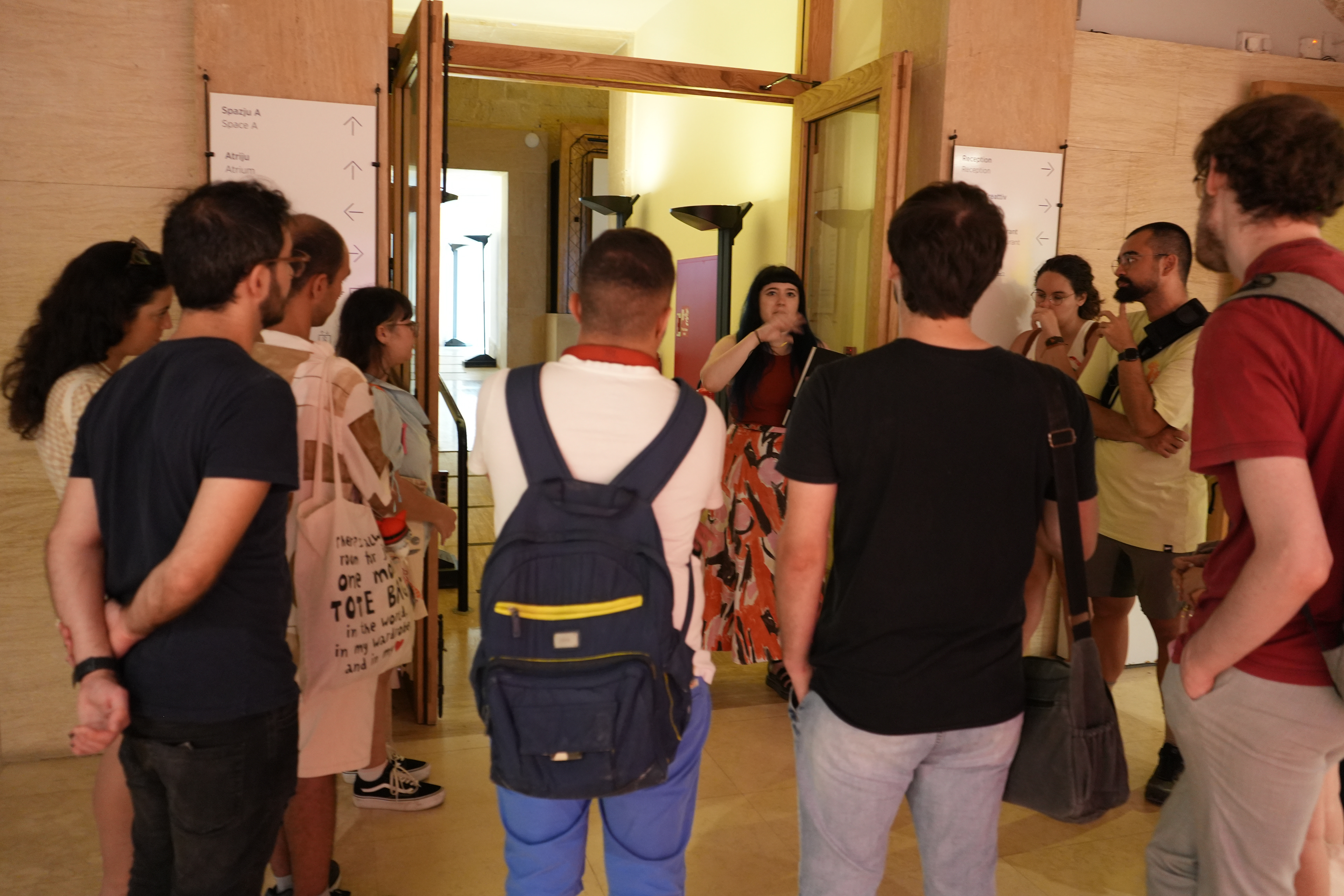

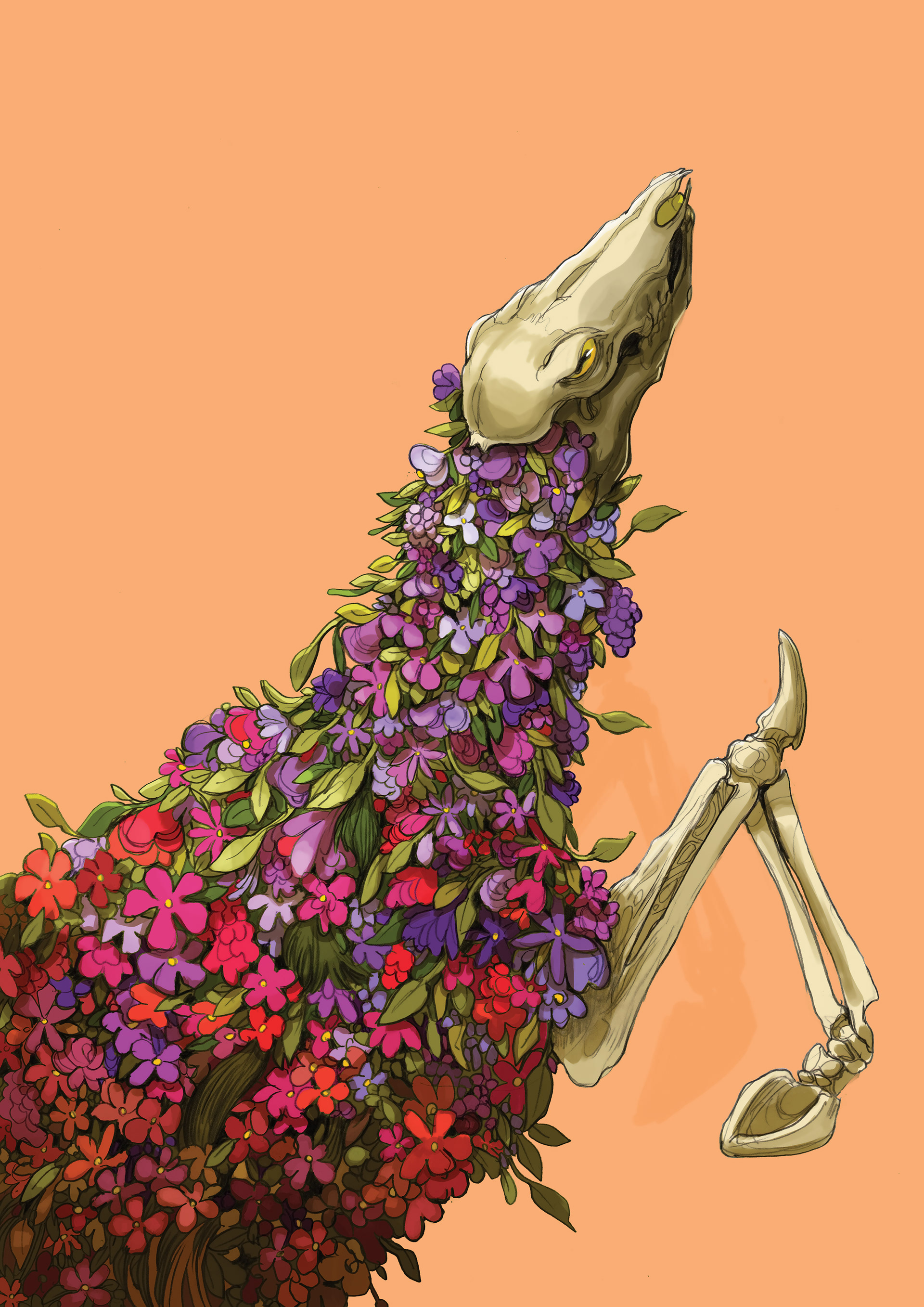
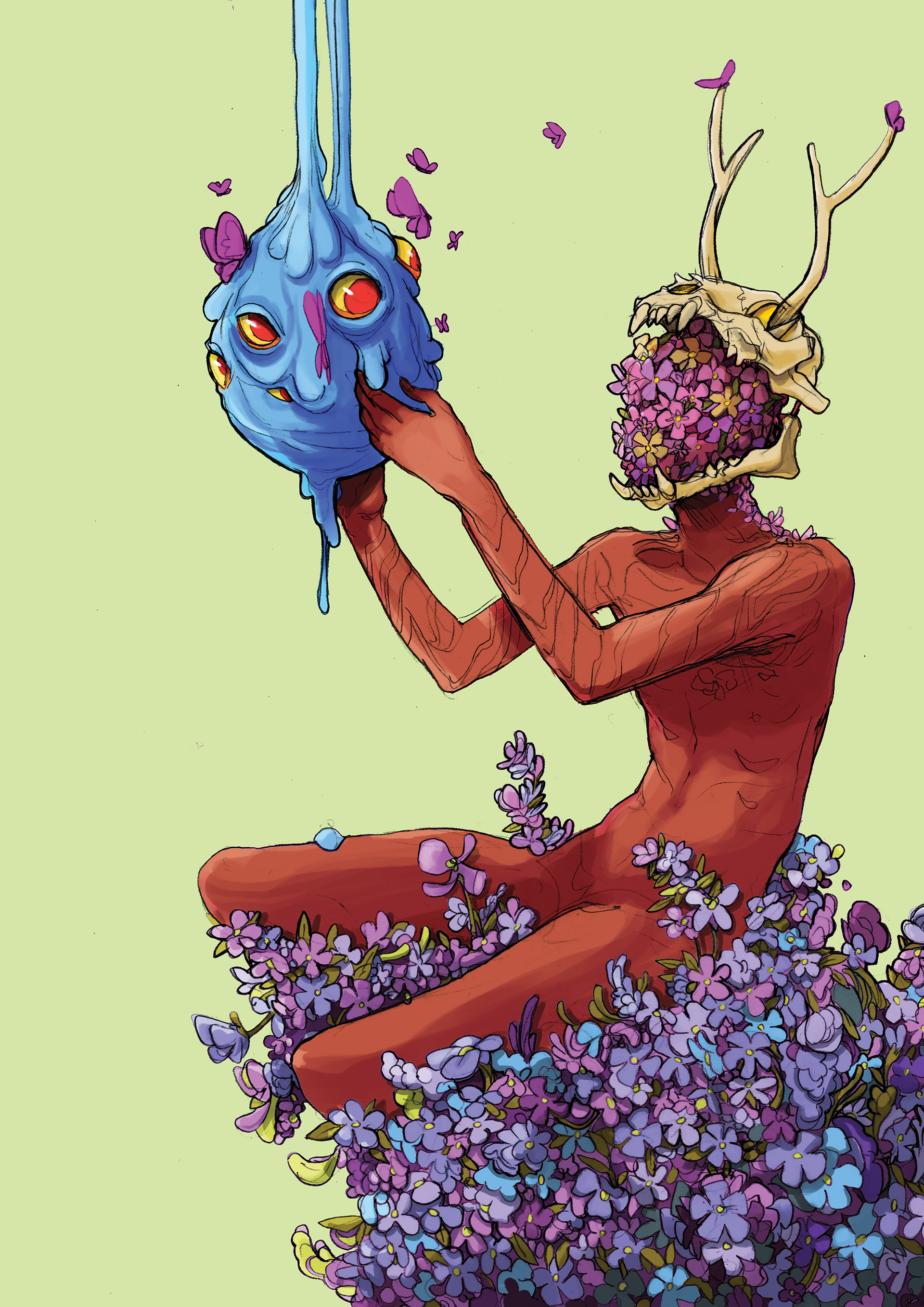
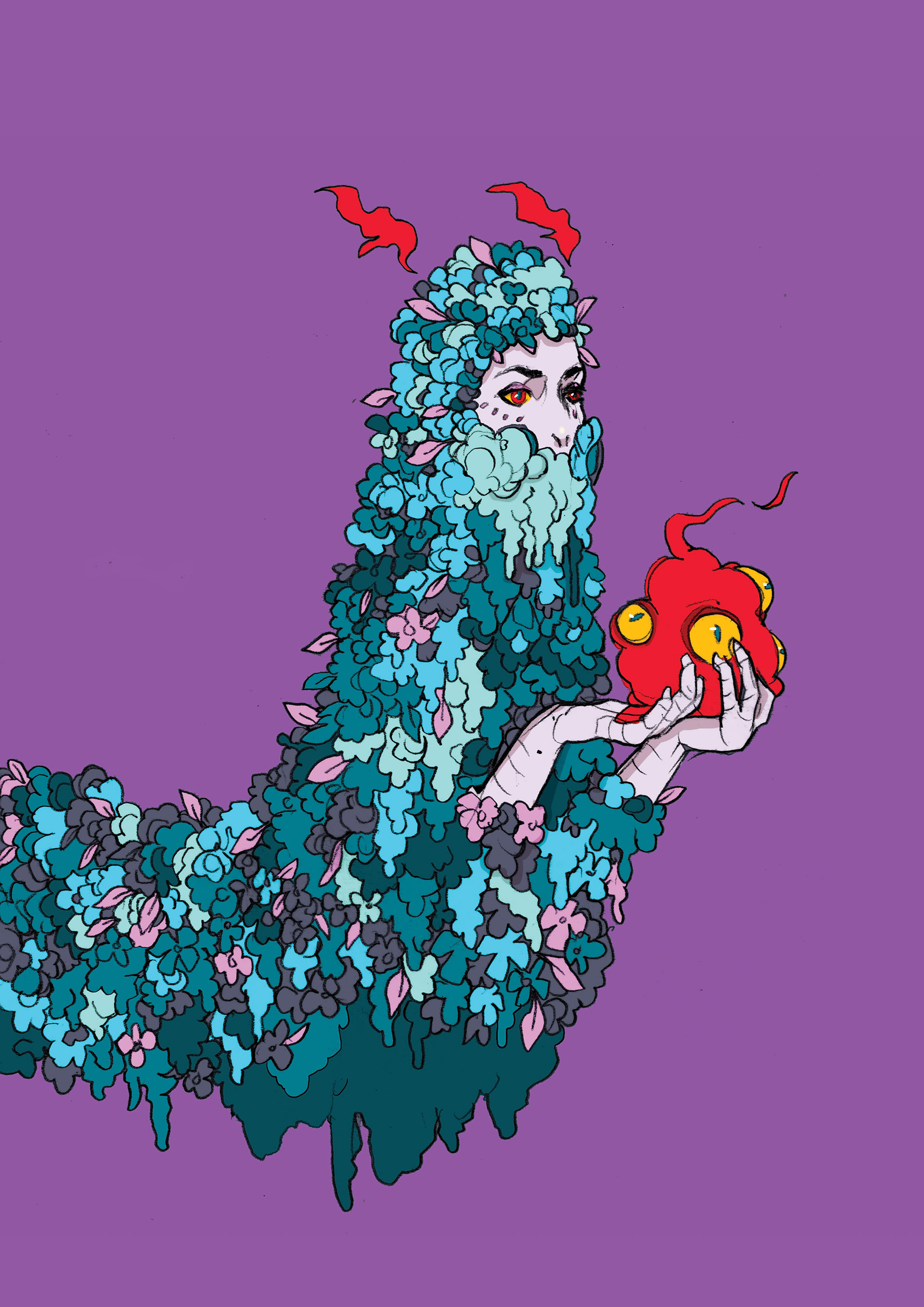
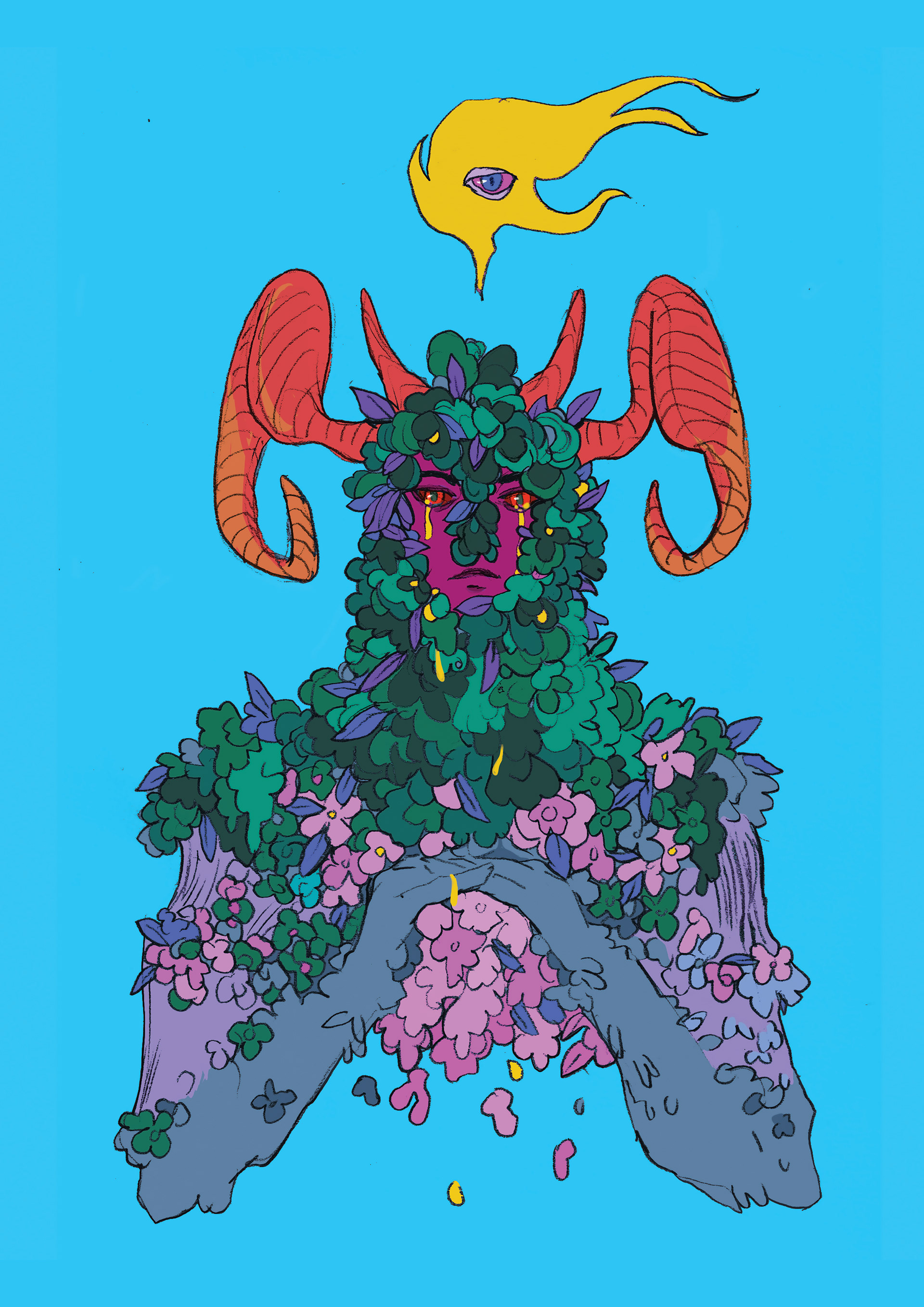
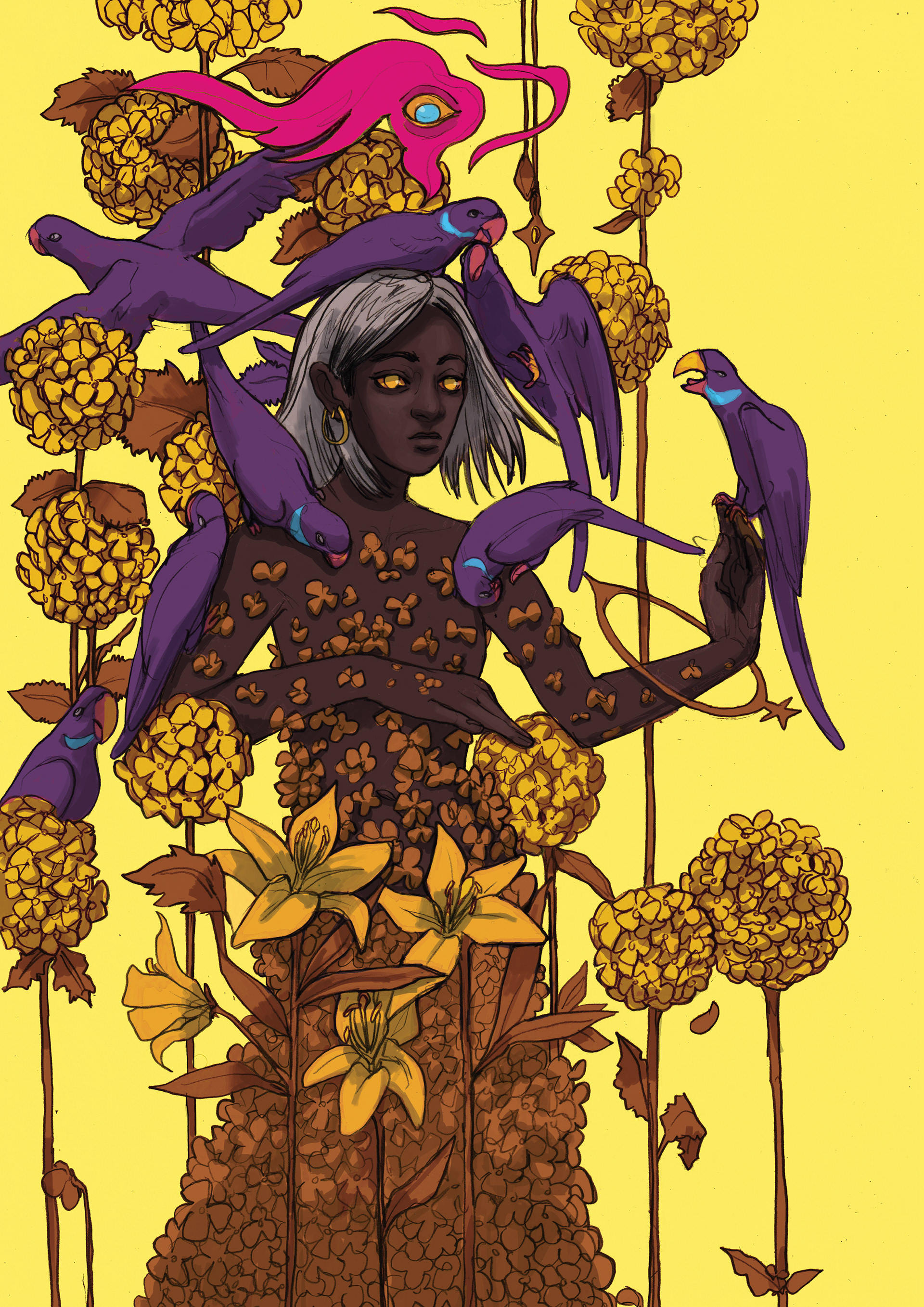
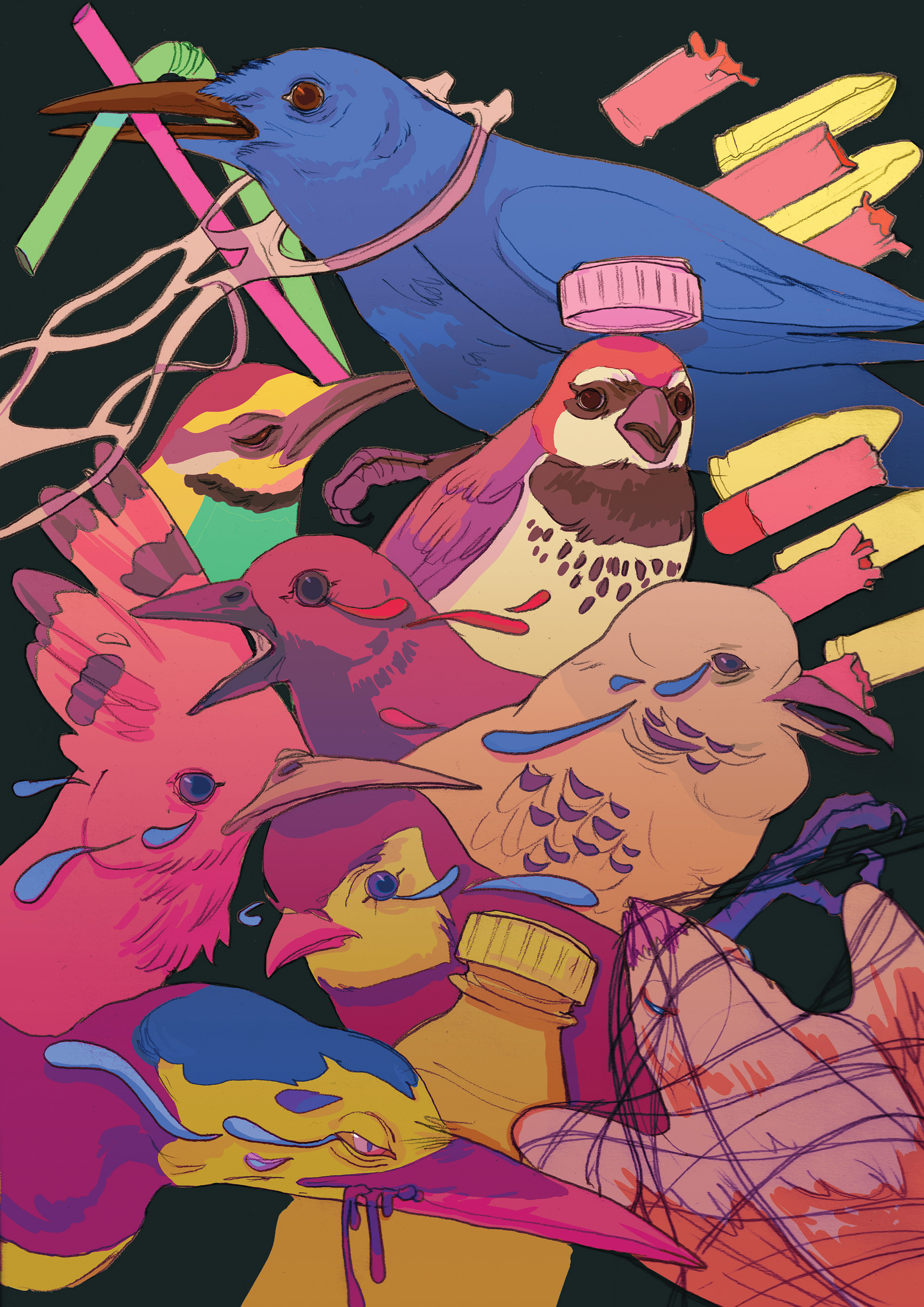
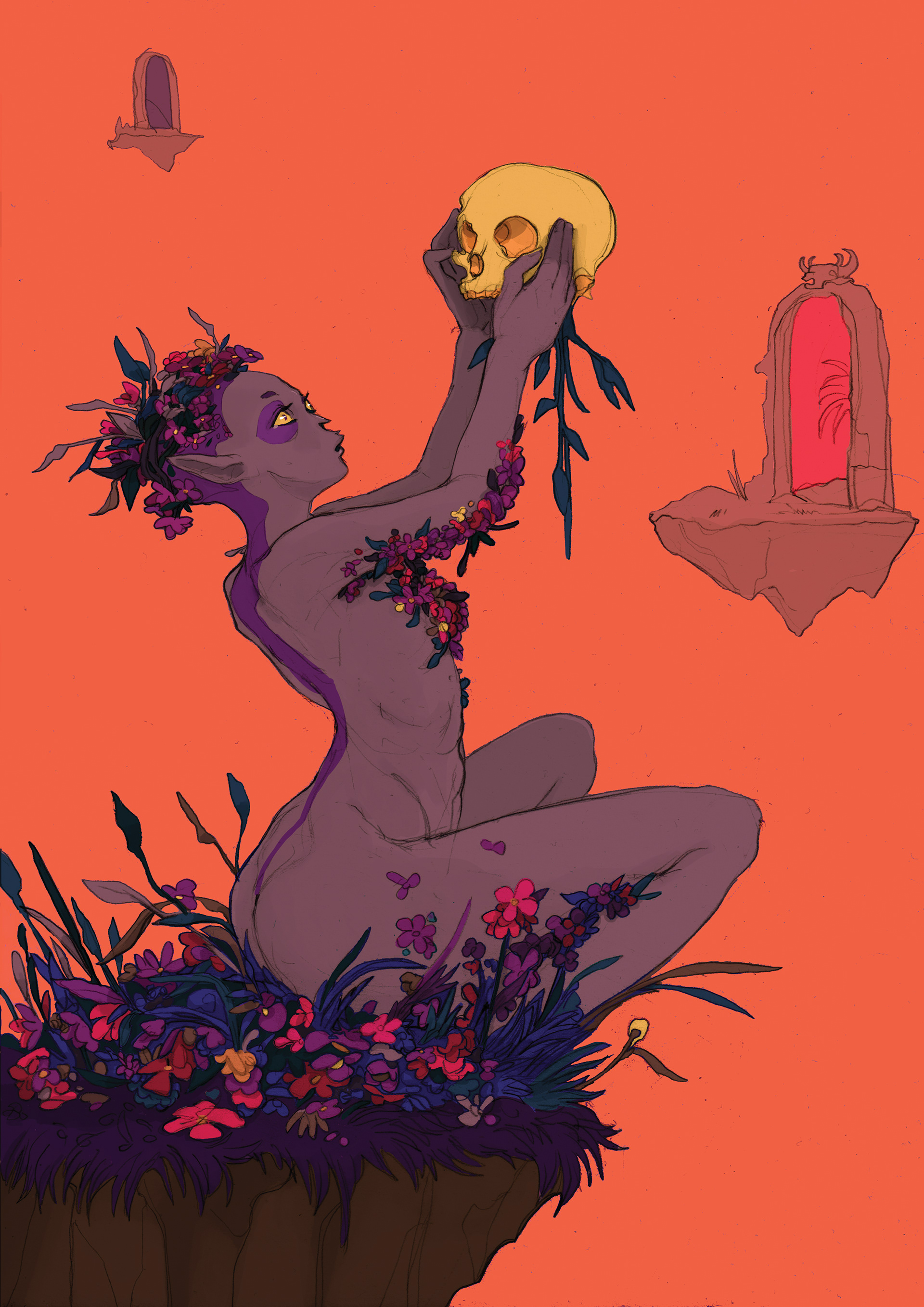
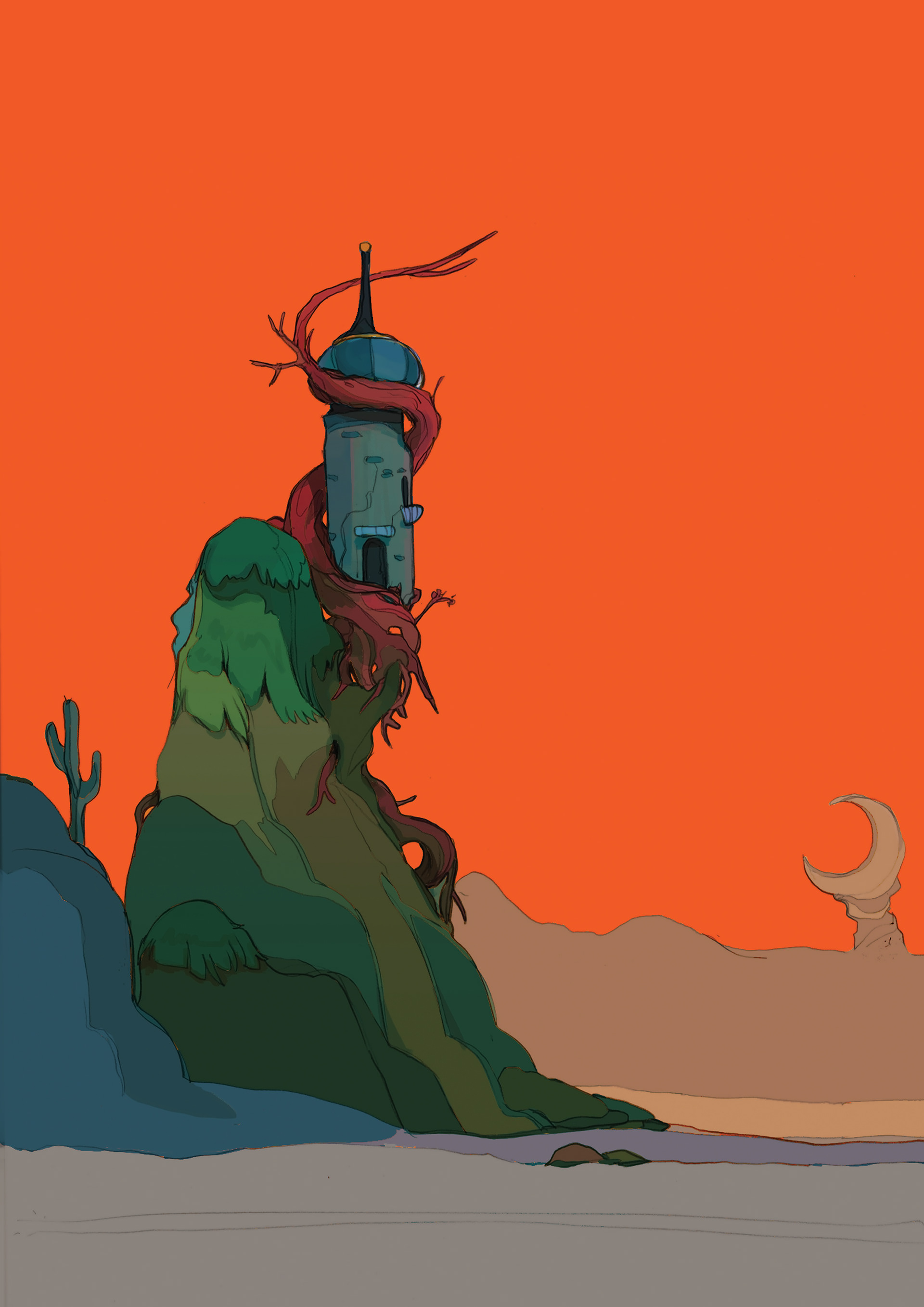

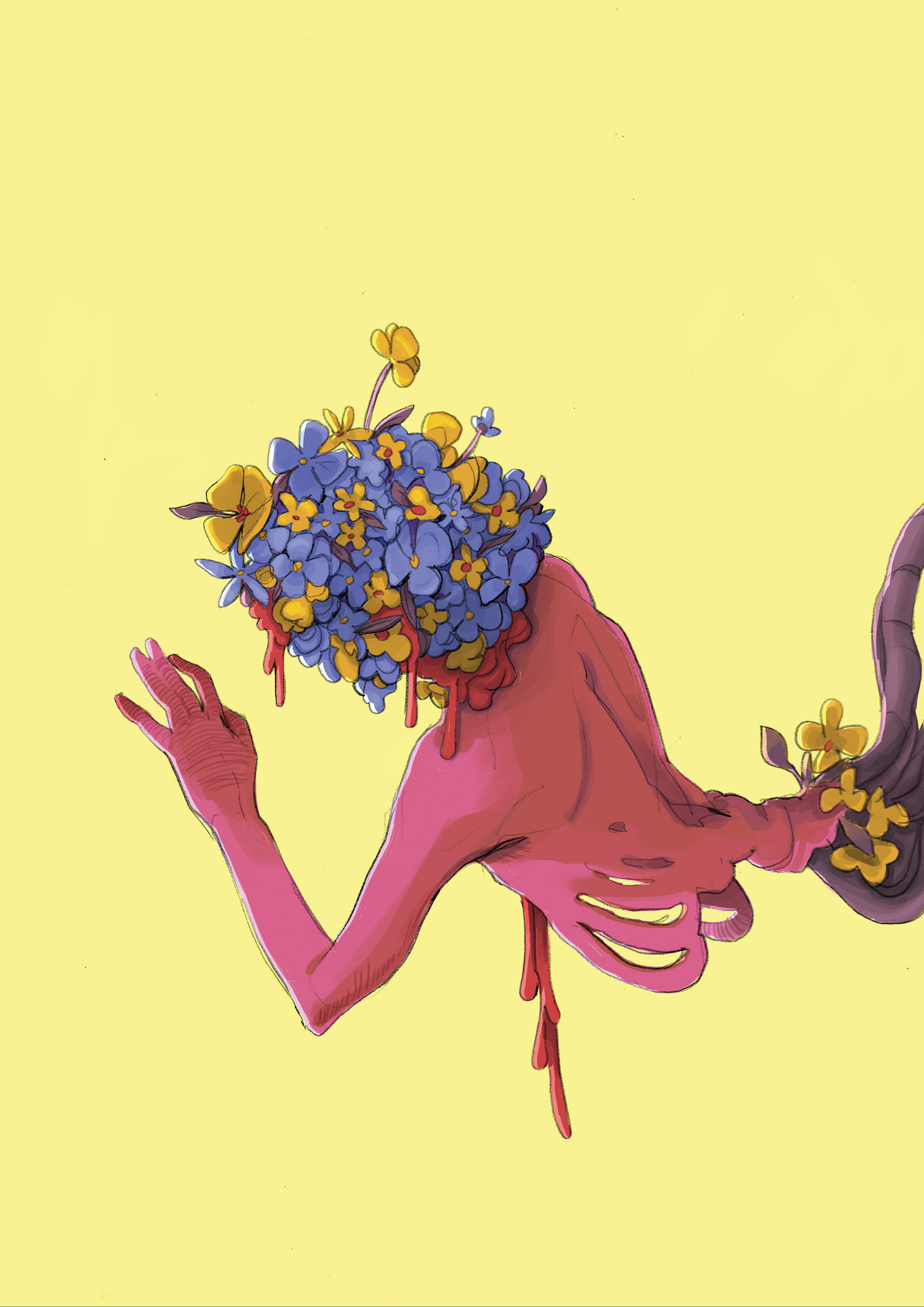

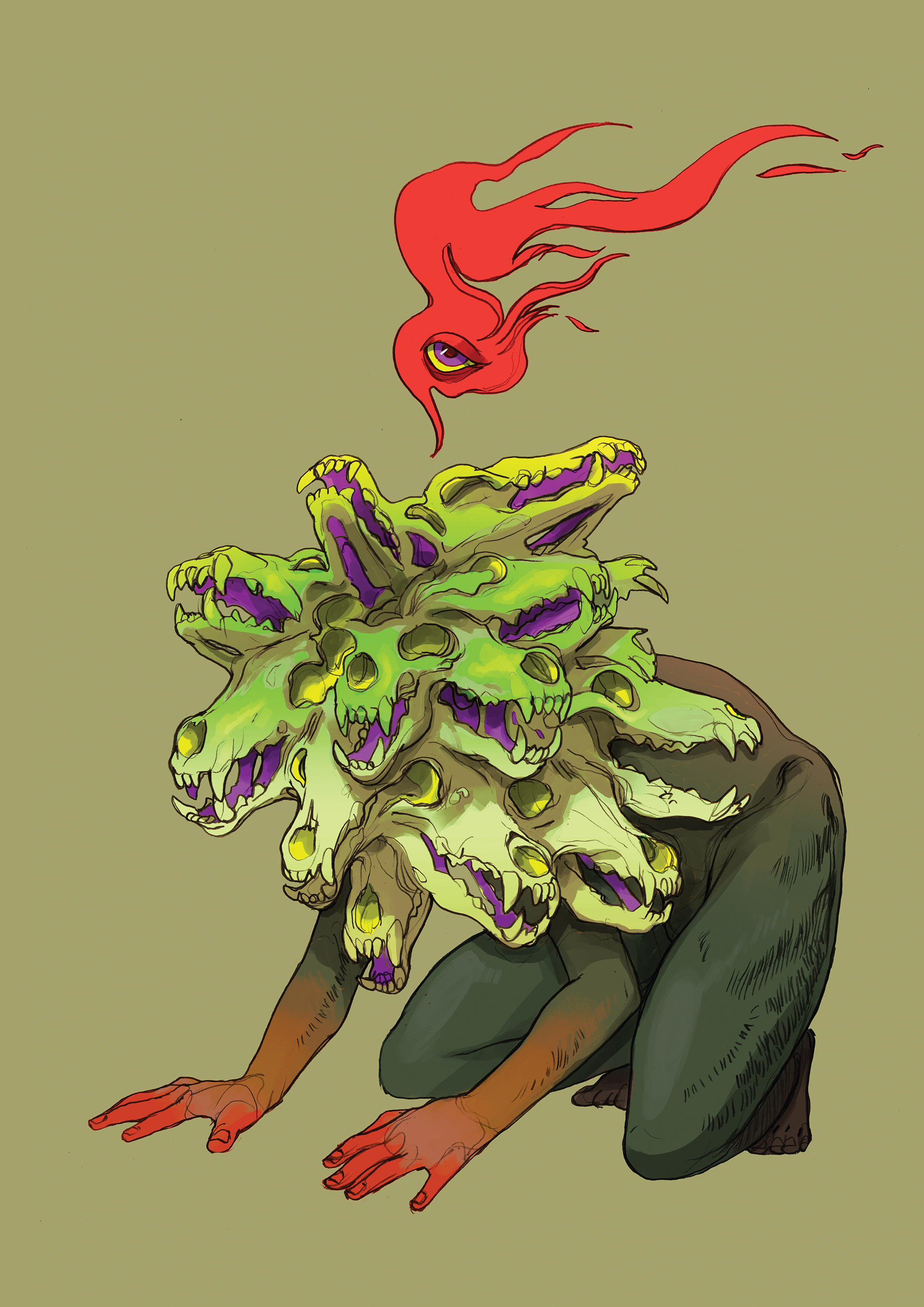
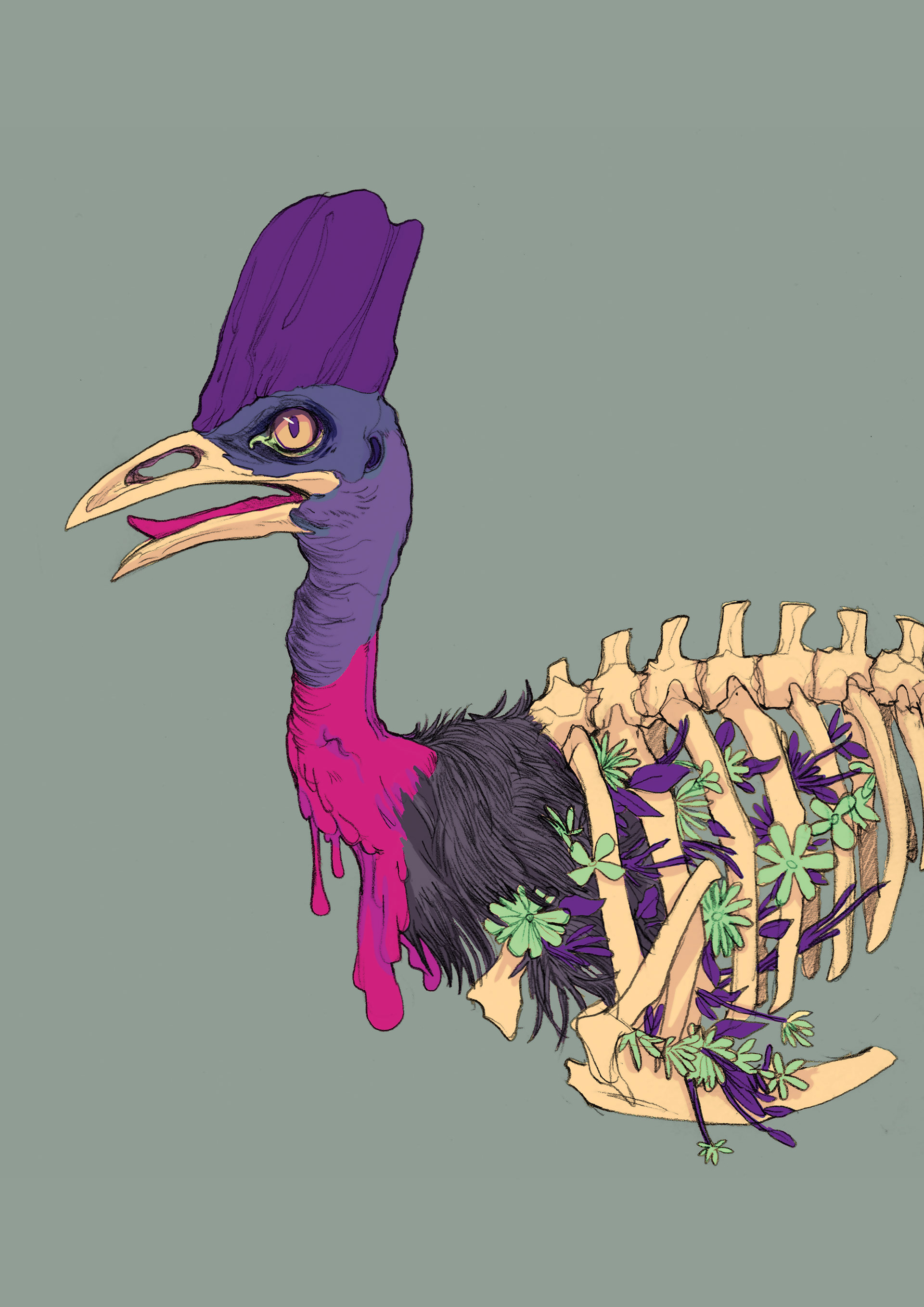
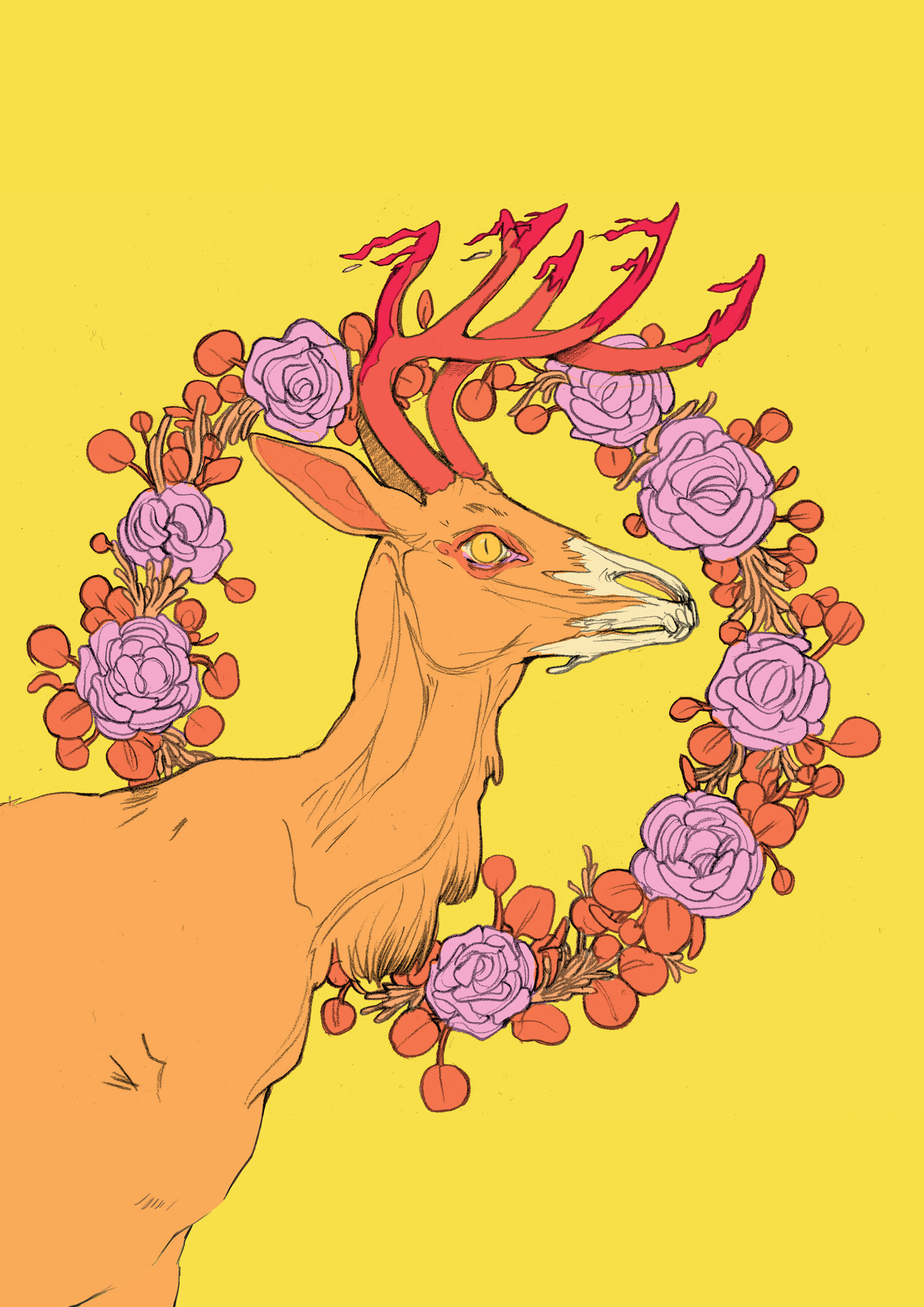
An interactive piece entitled 'Extinction wall' was present. The Pharoah hound appears again, this time in full skeletal form. The public was encouraged to write or draw anxieties or hopes for the future on the provided sticky notes and then attach them to the skeleton to rebuild its fleshy form.
Before and After
